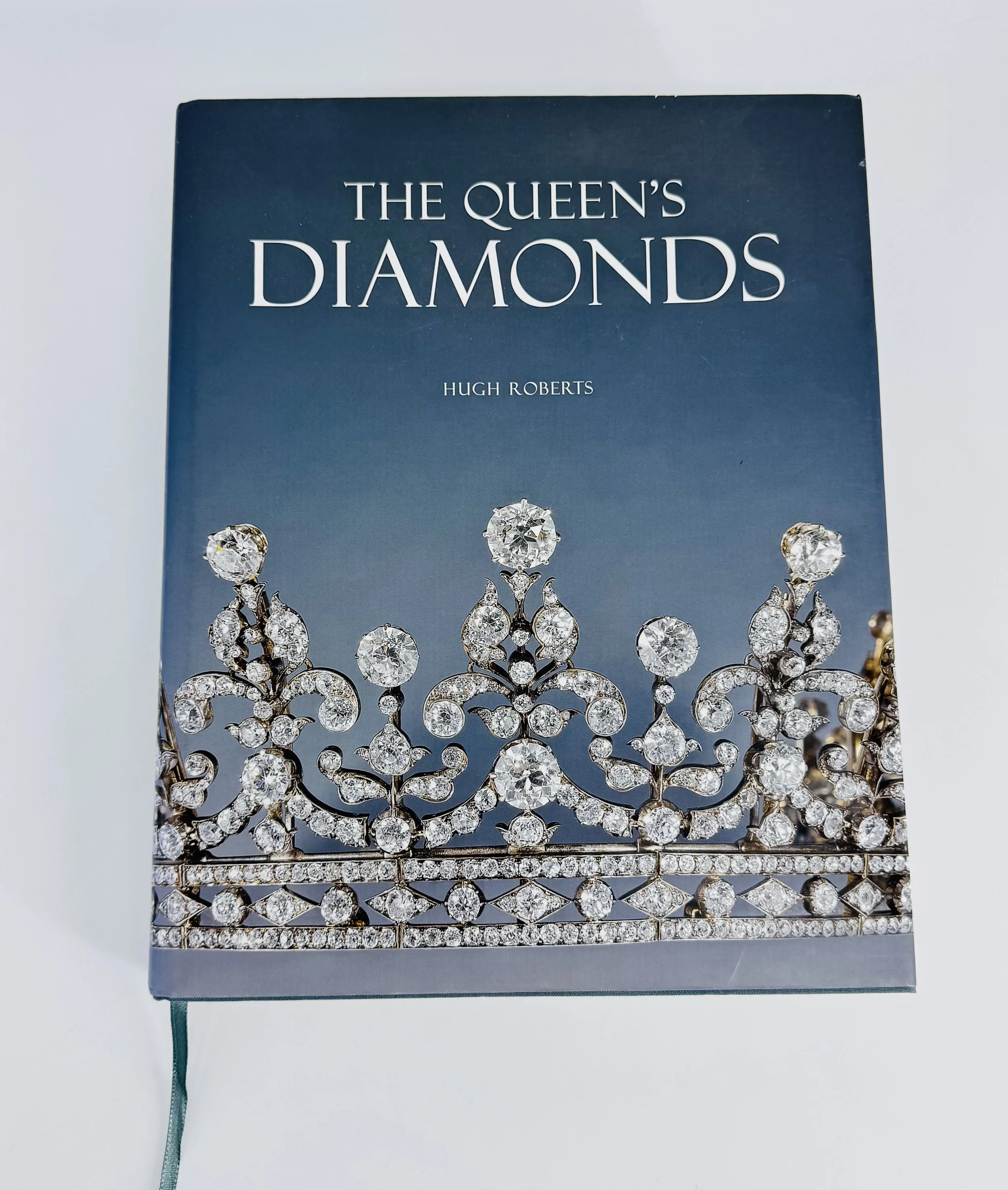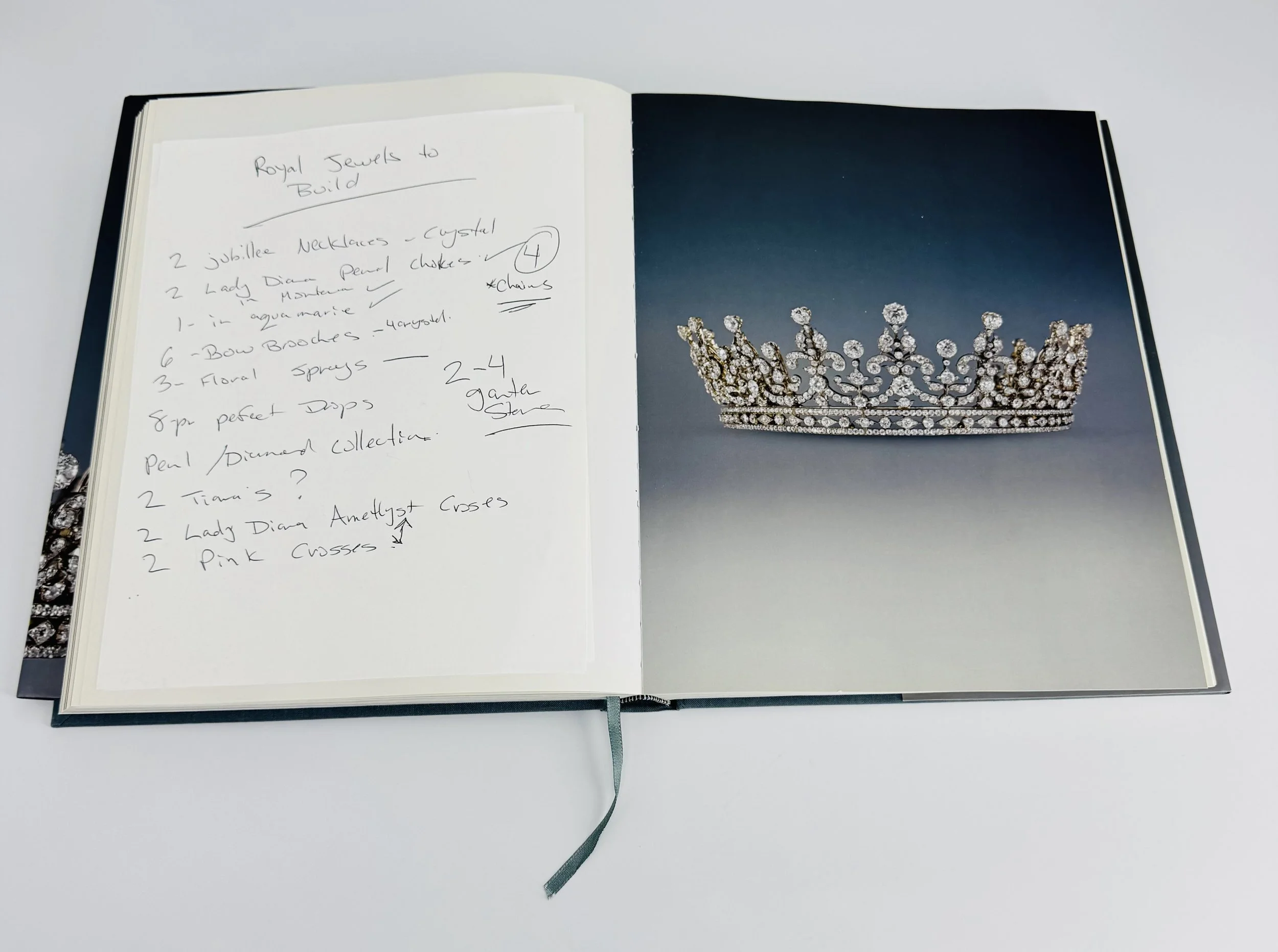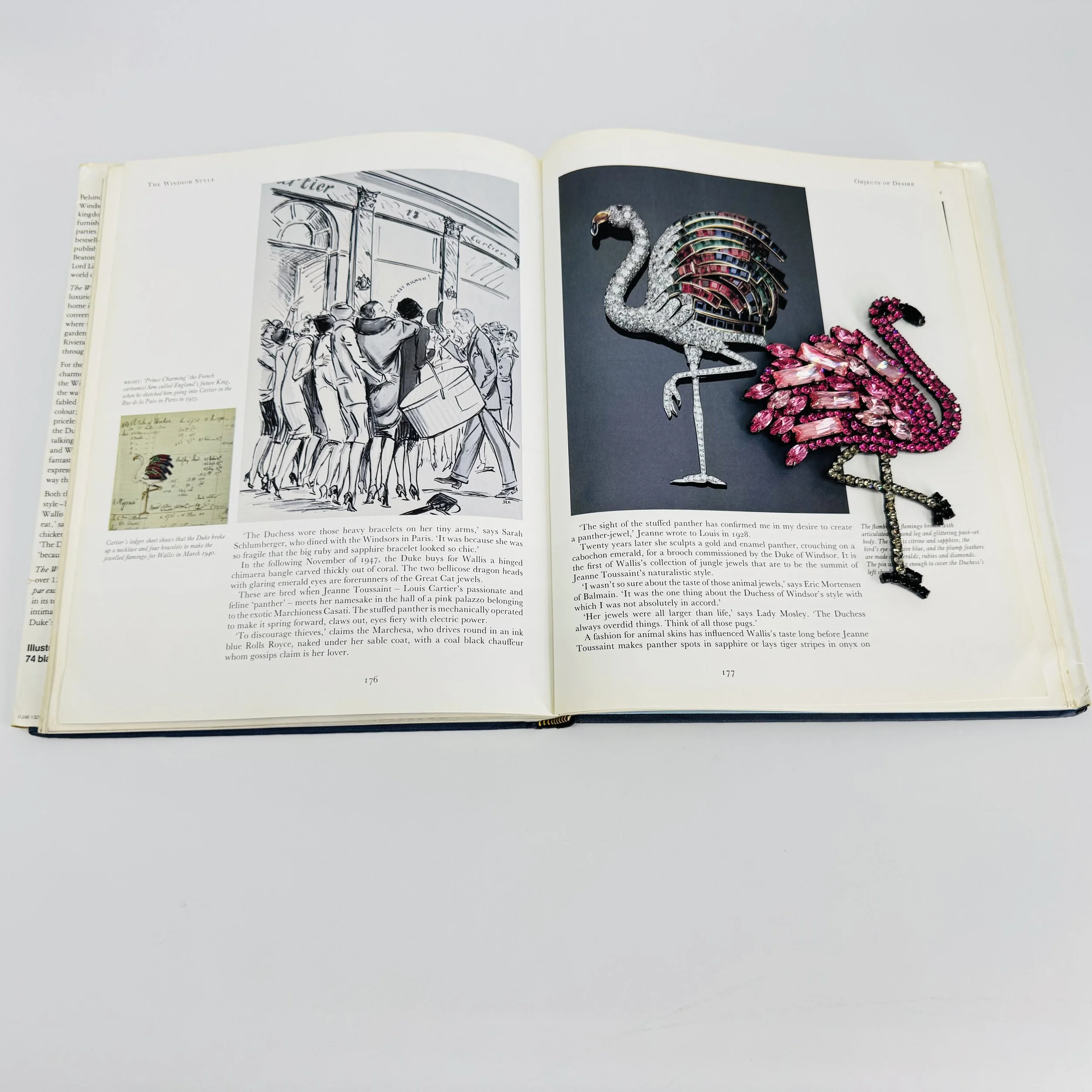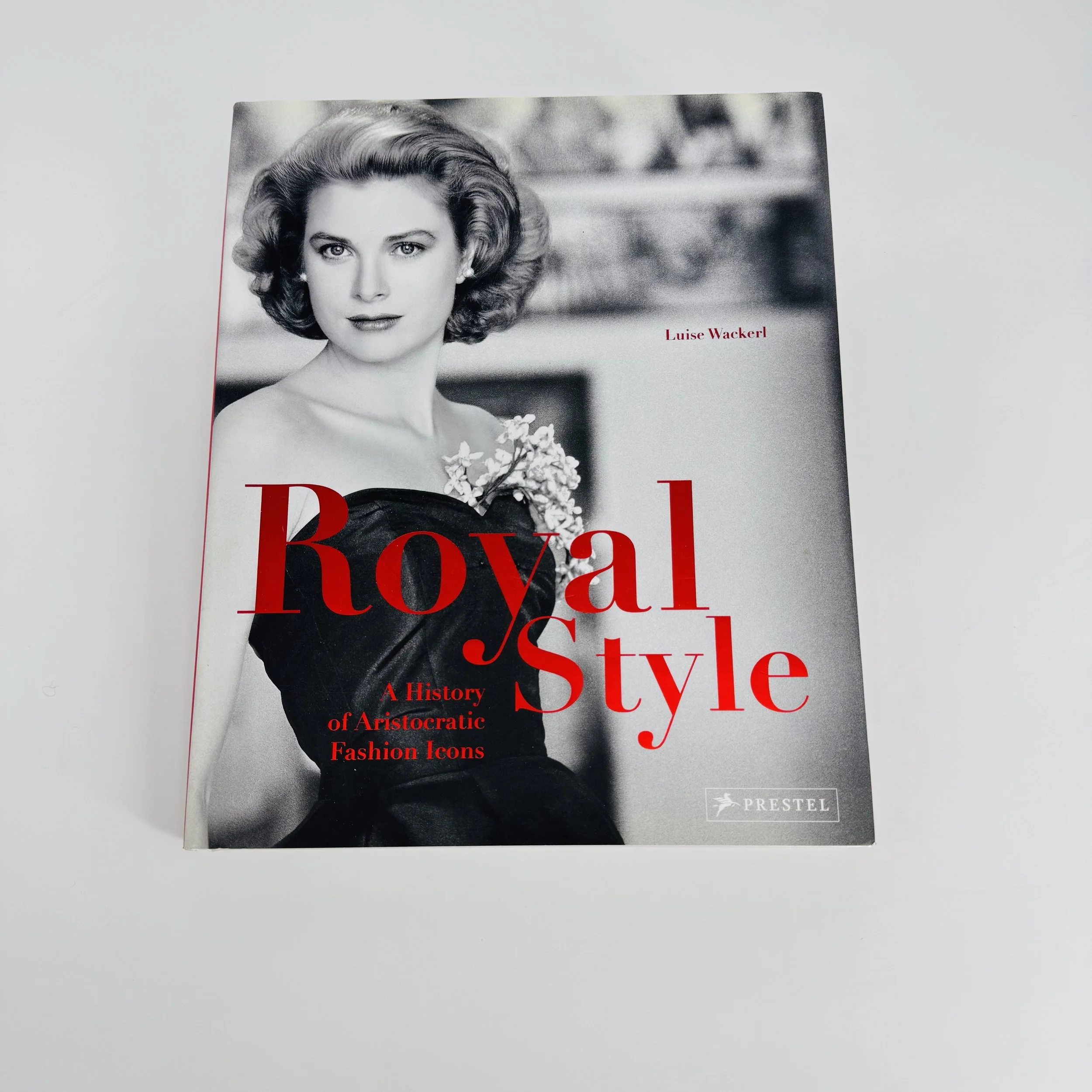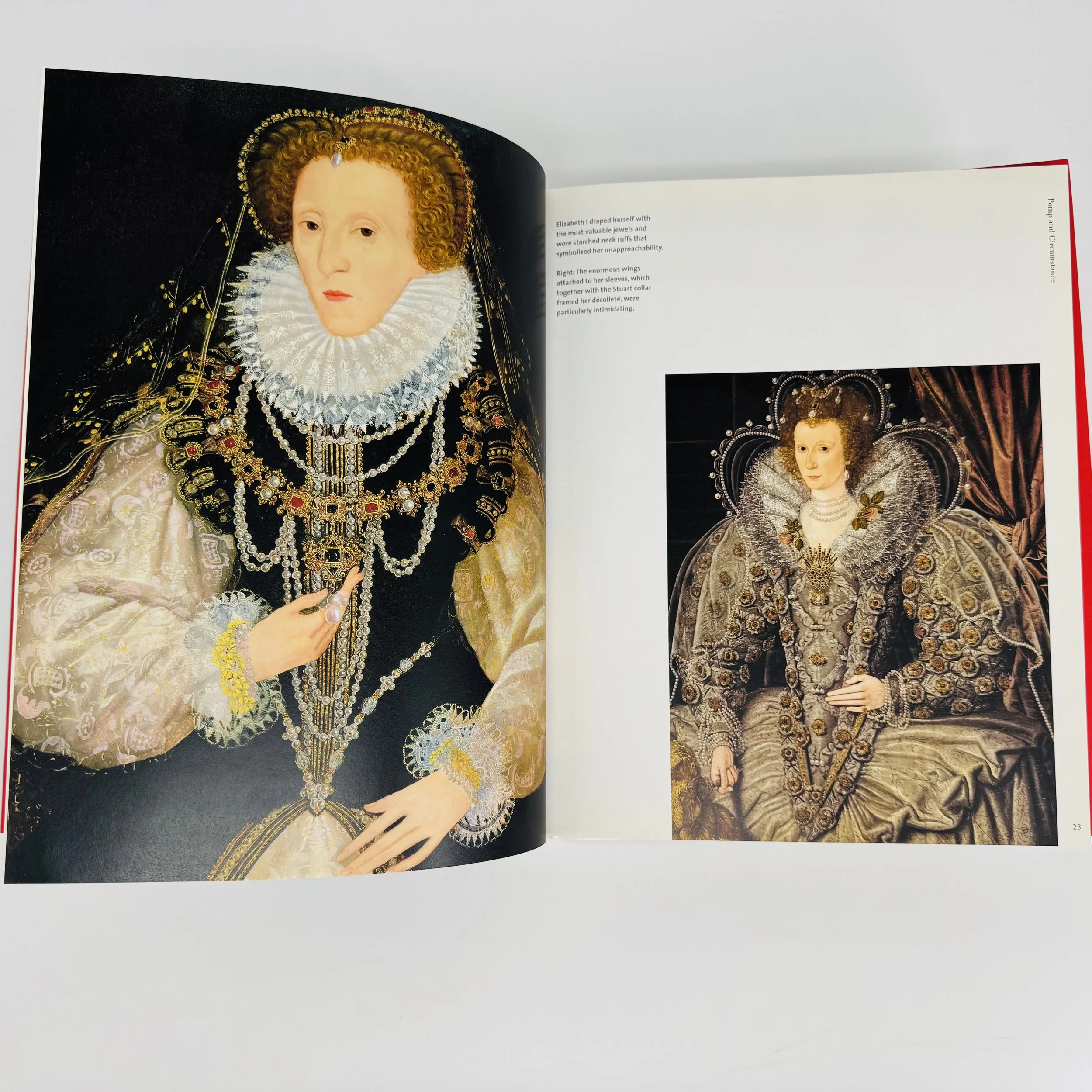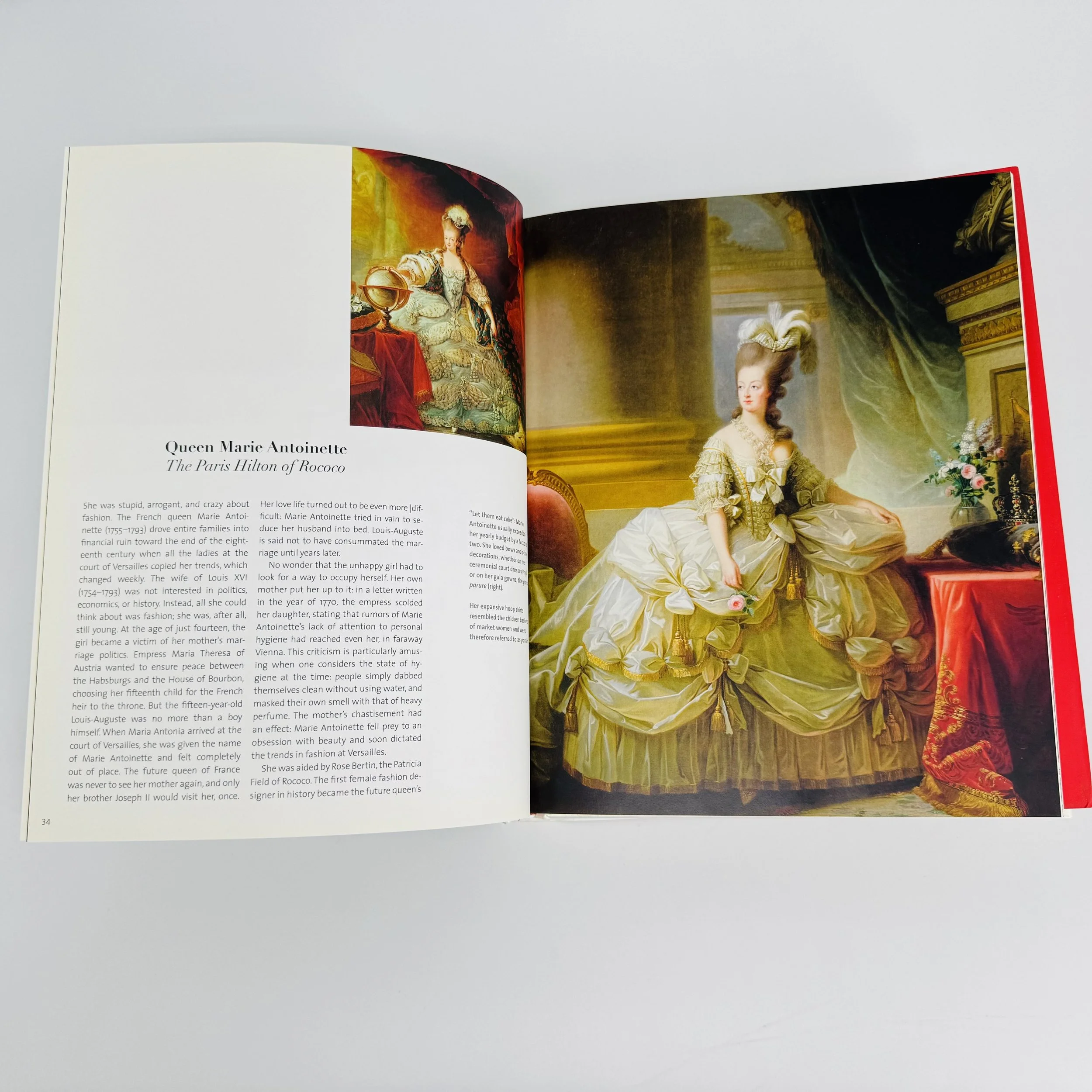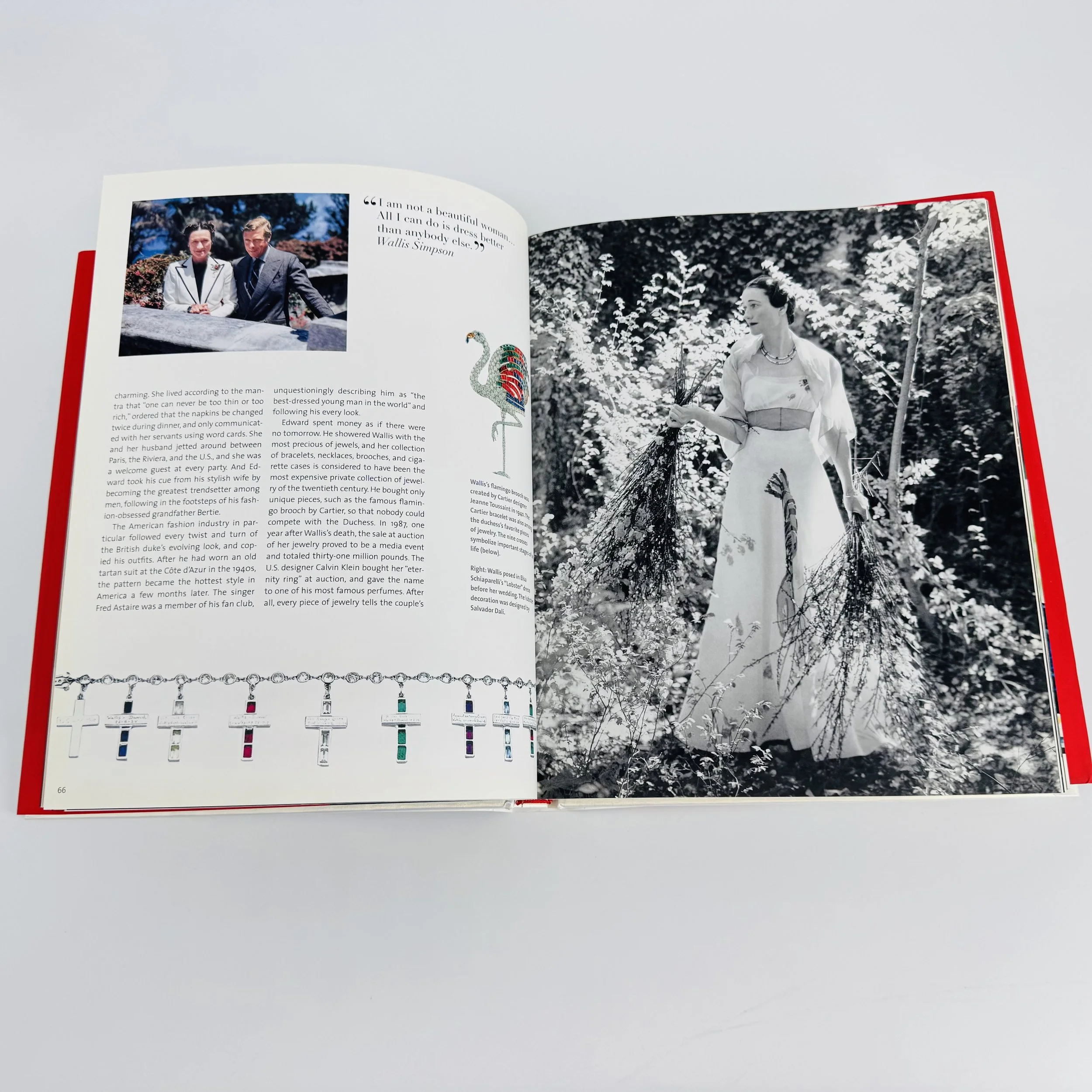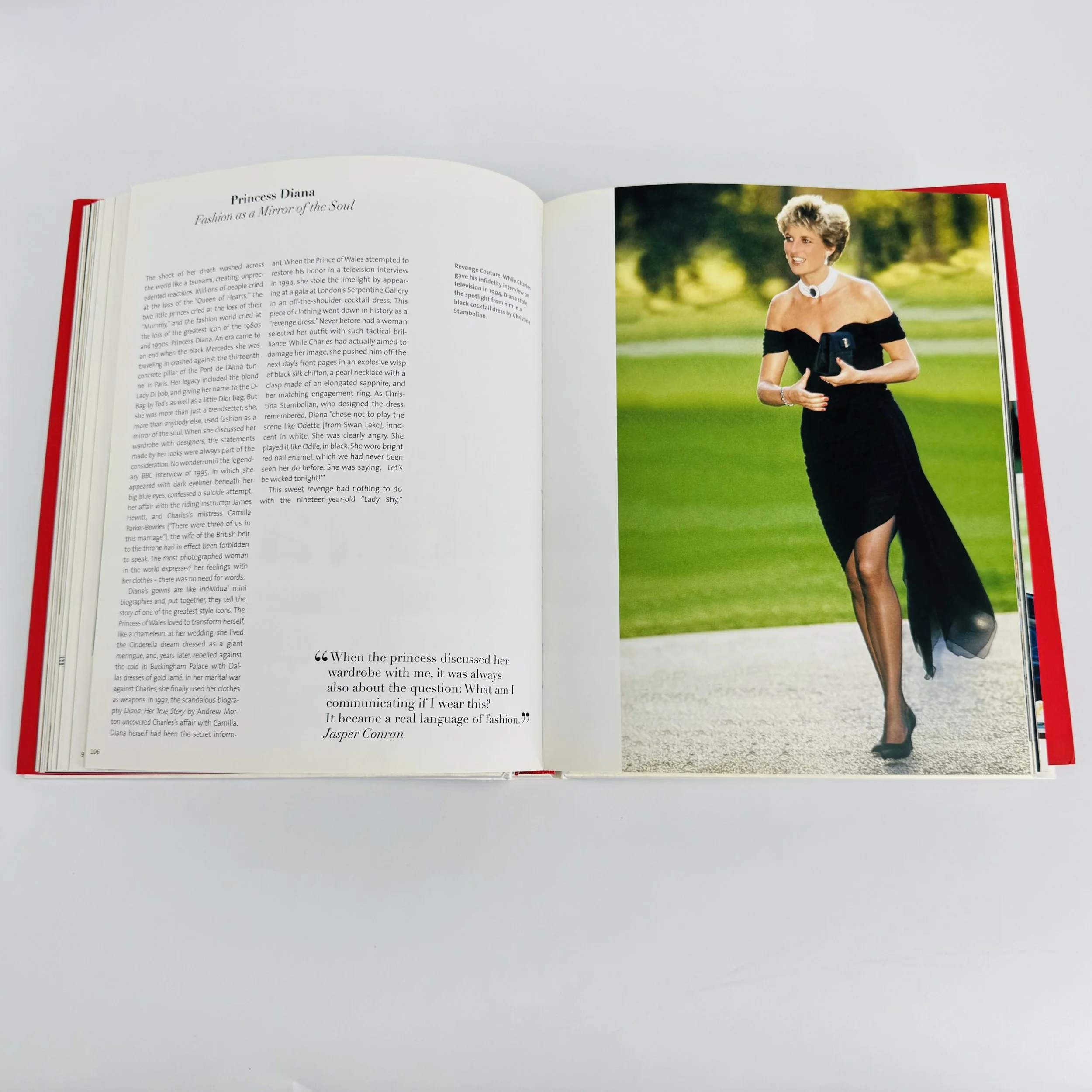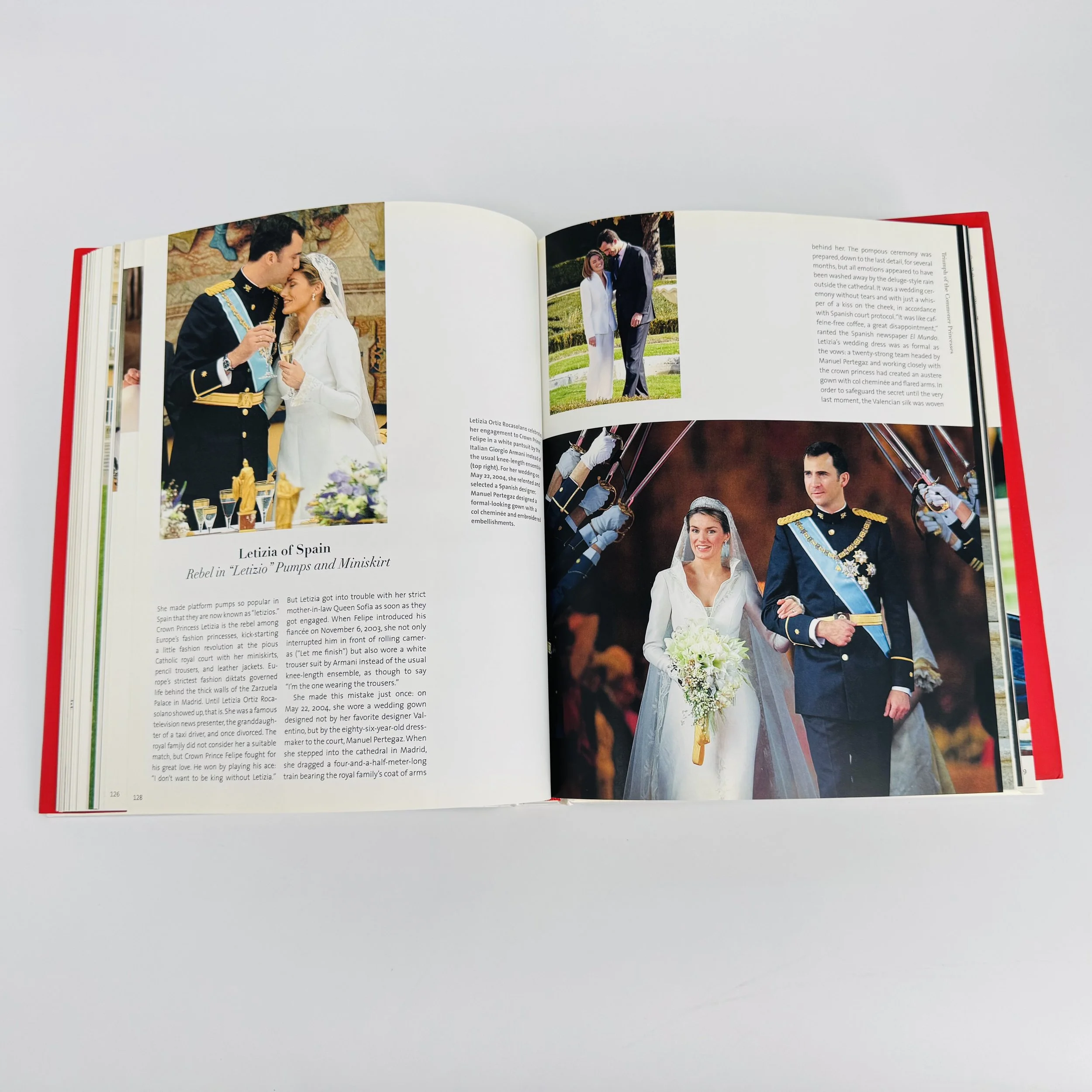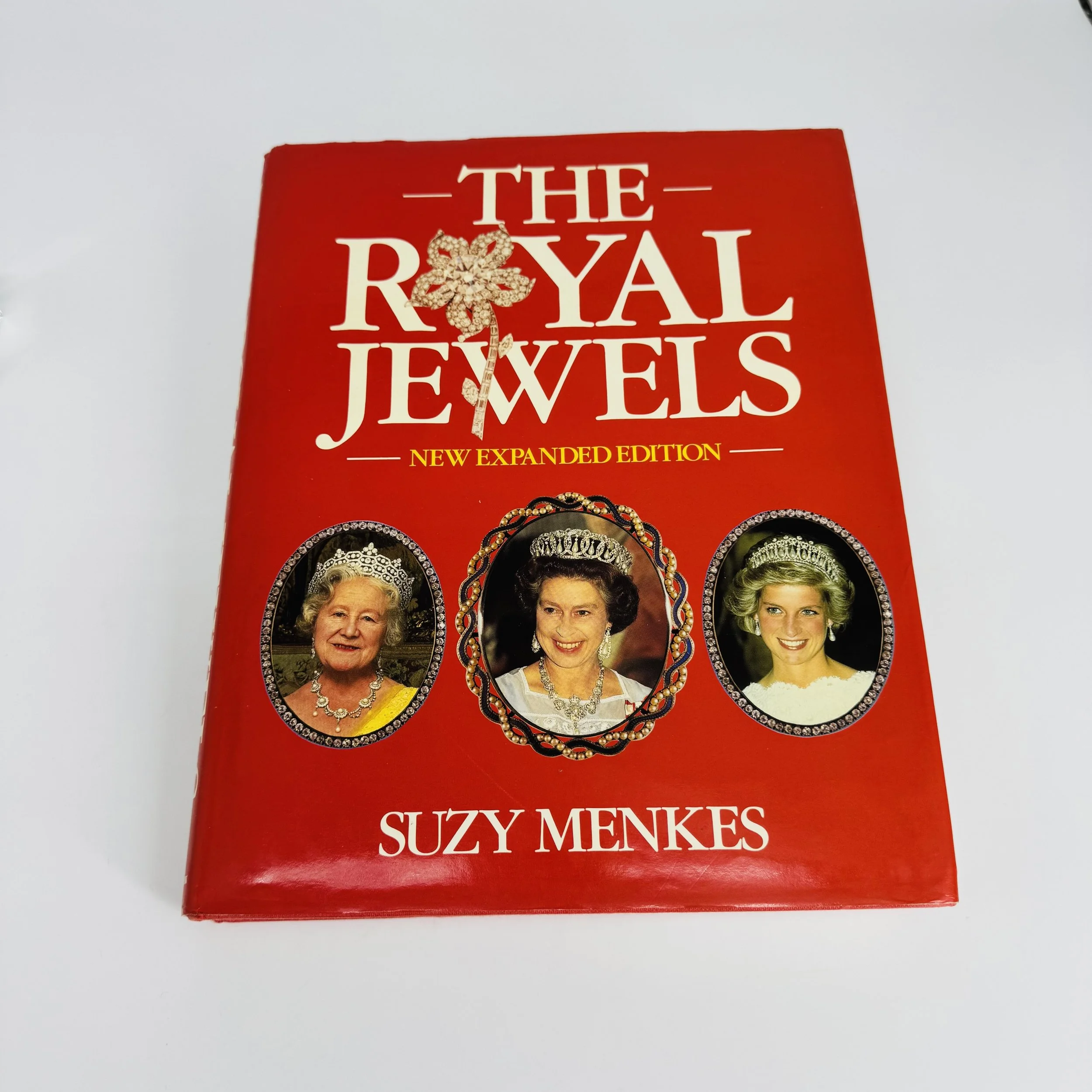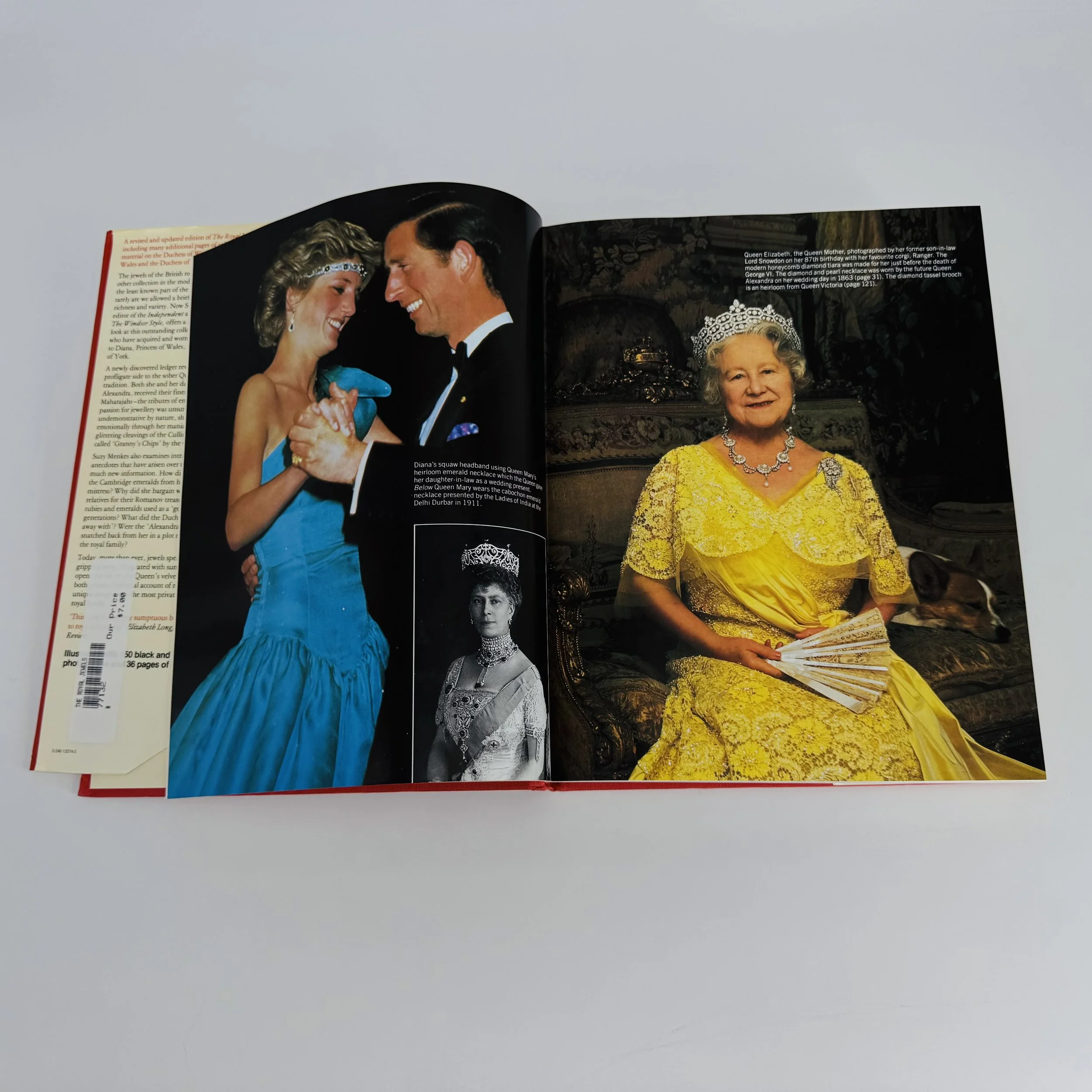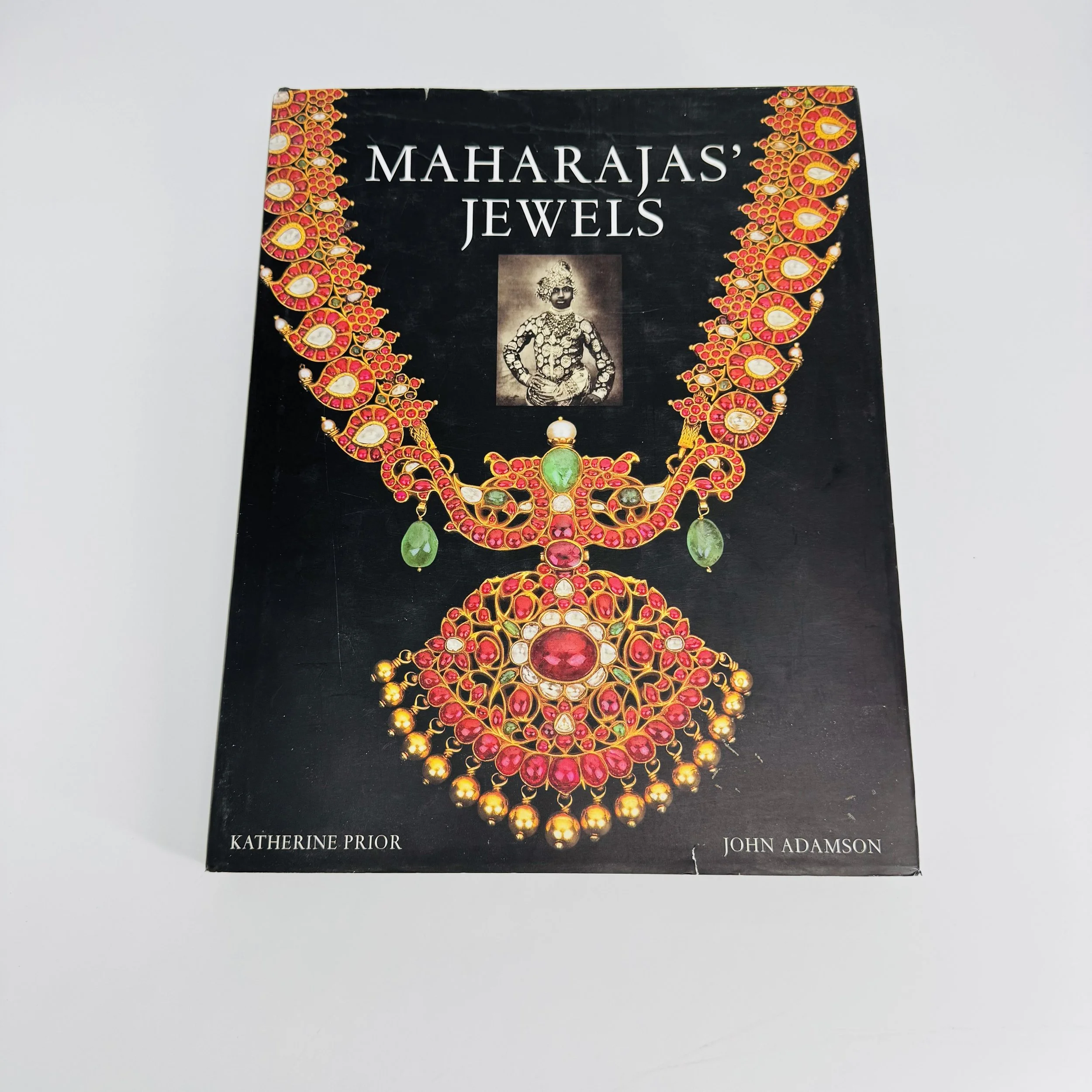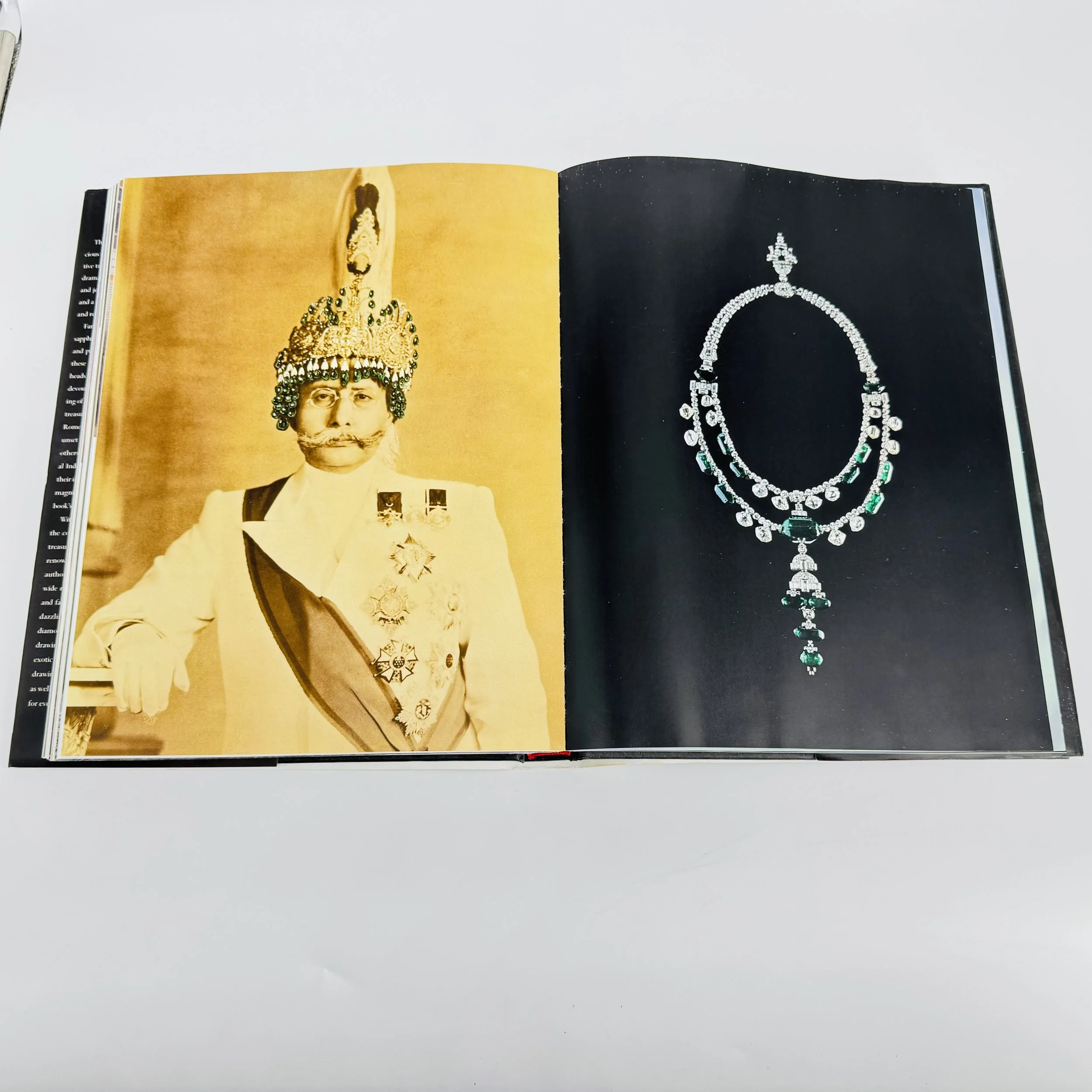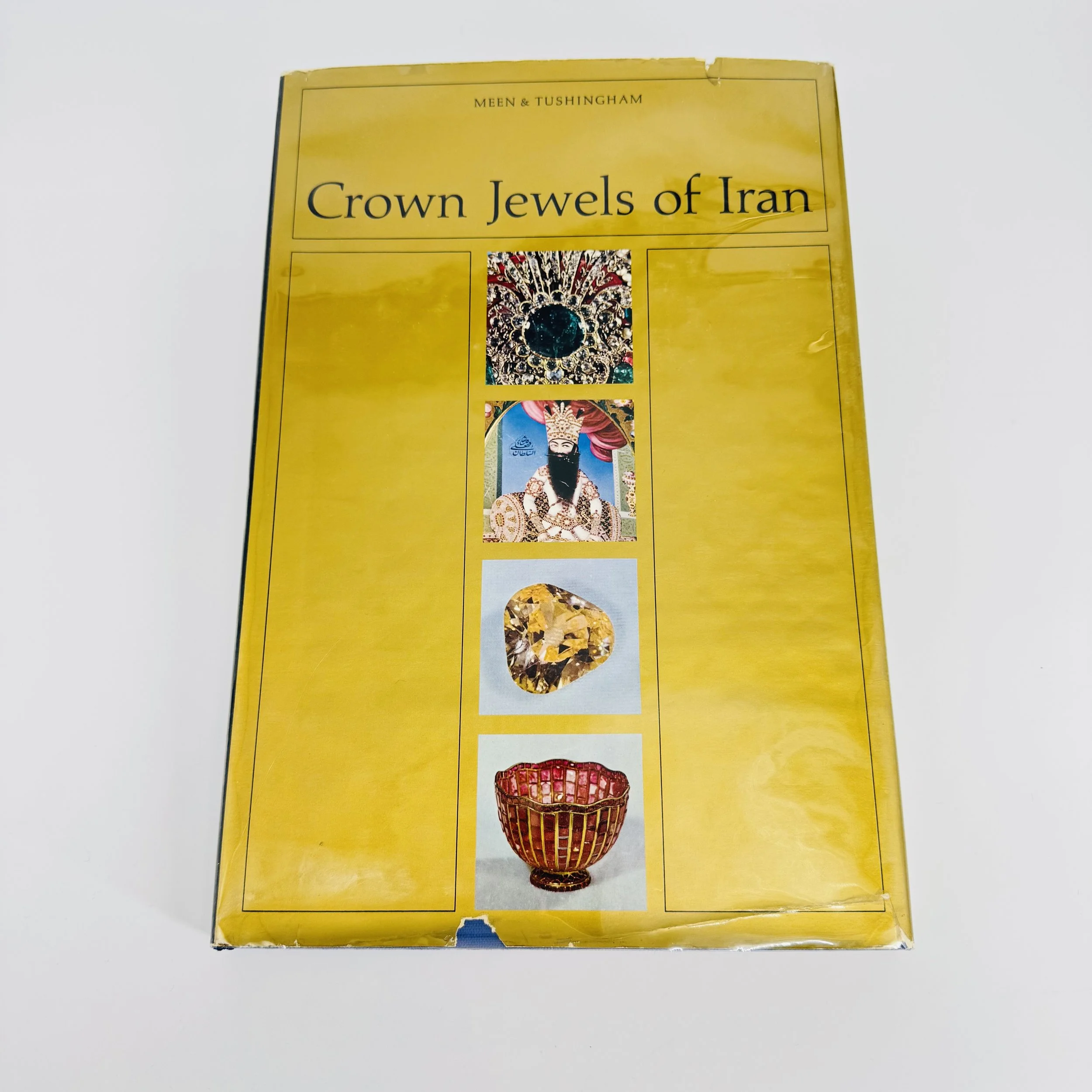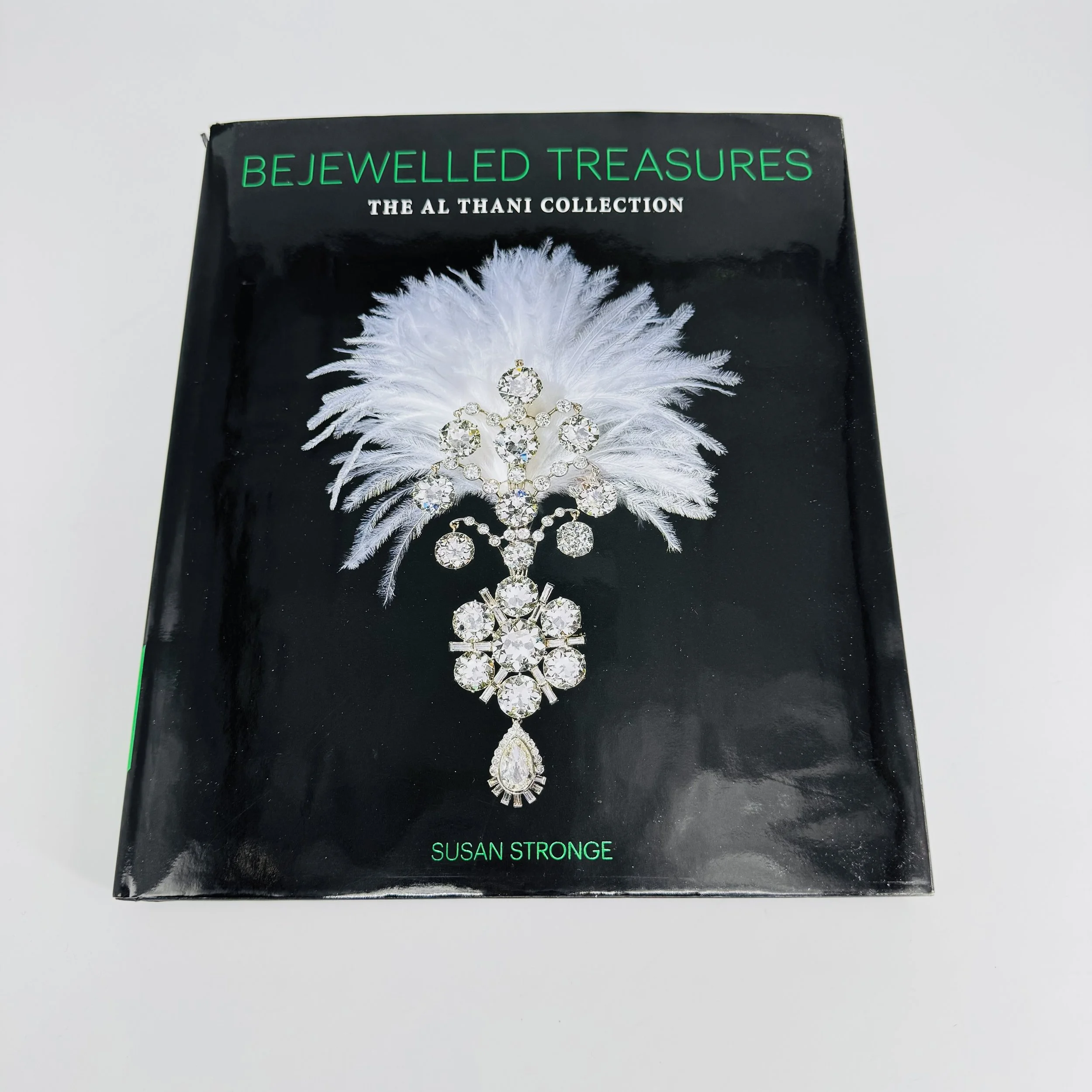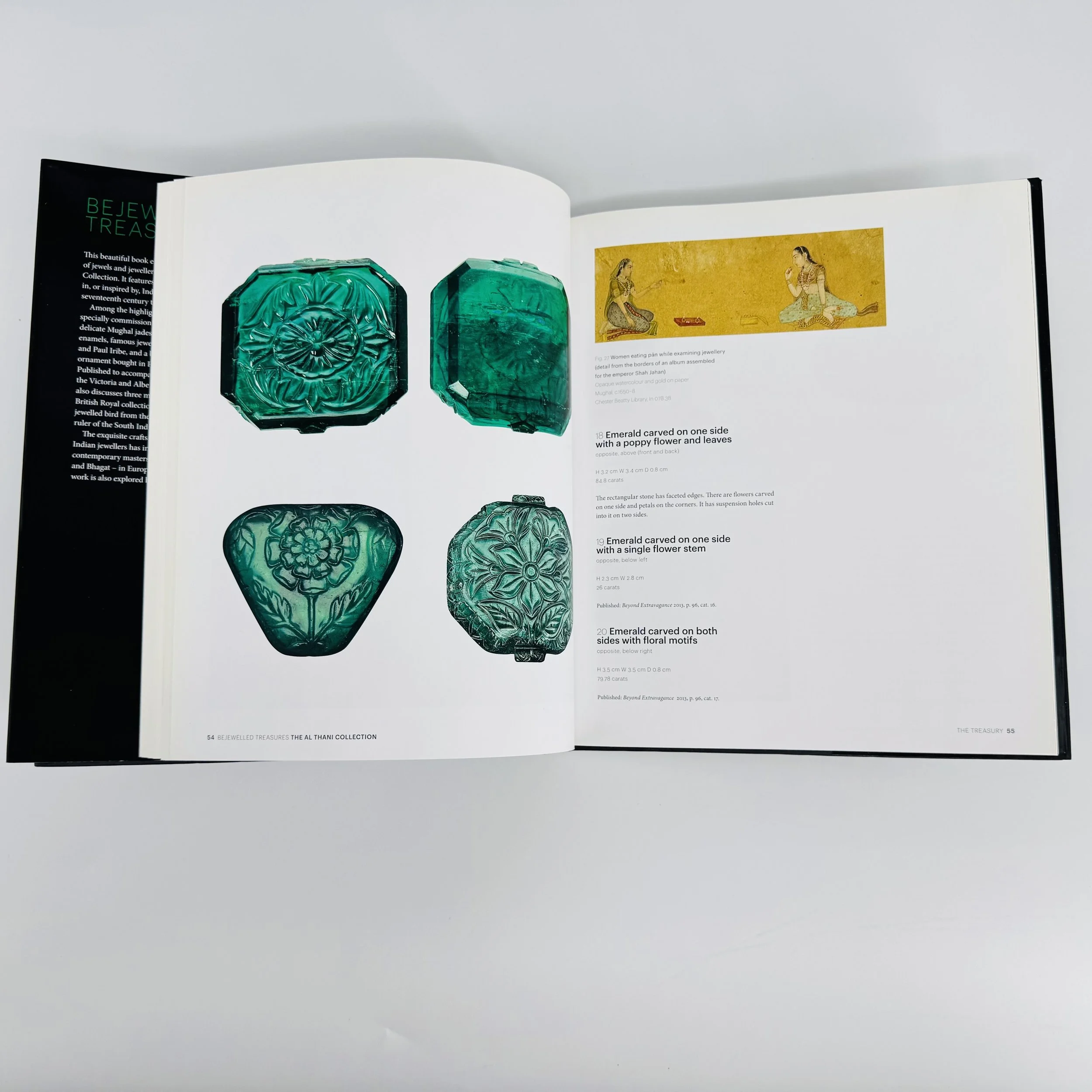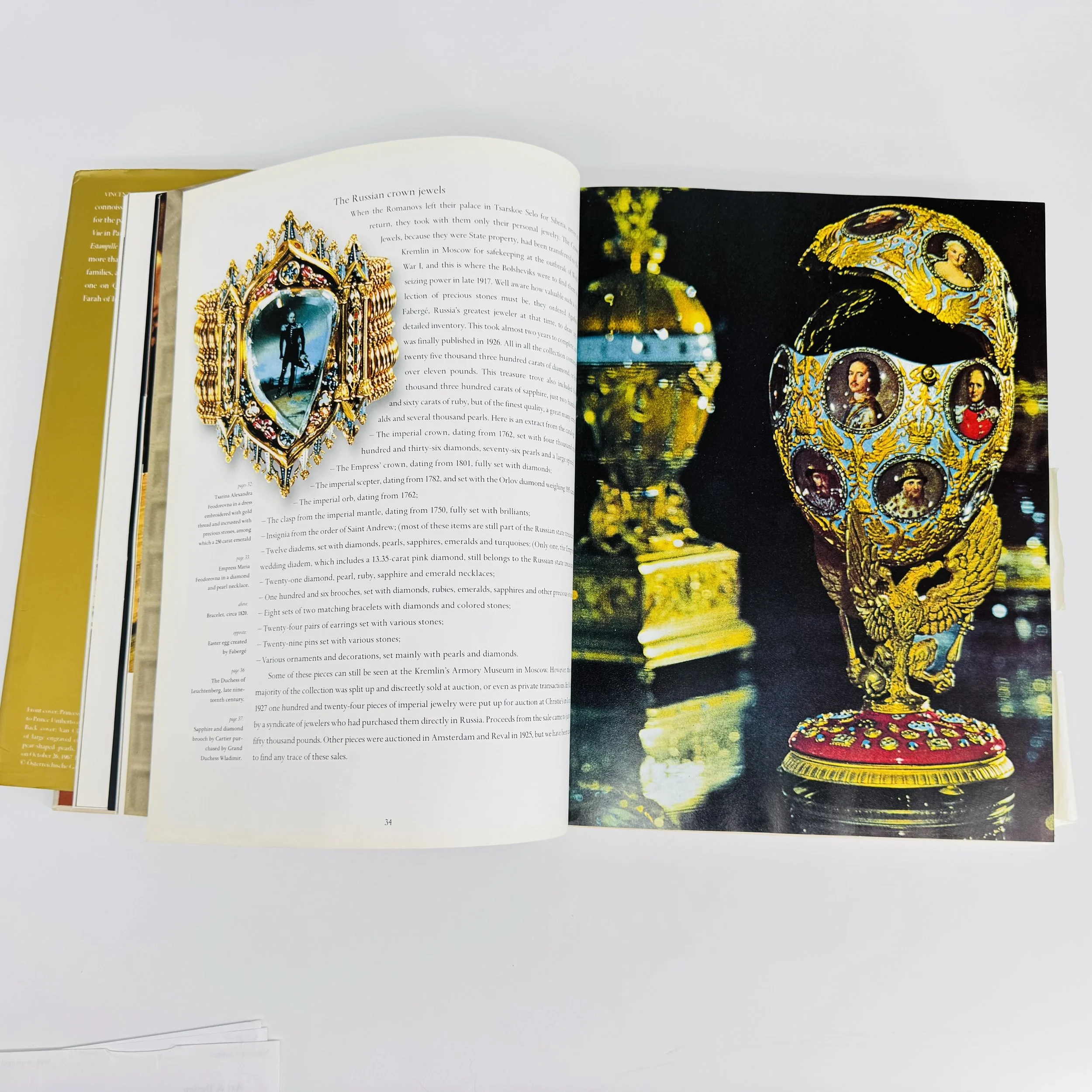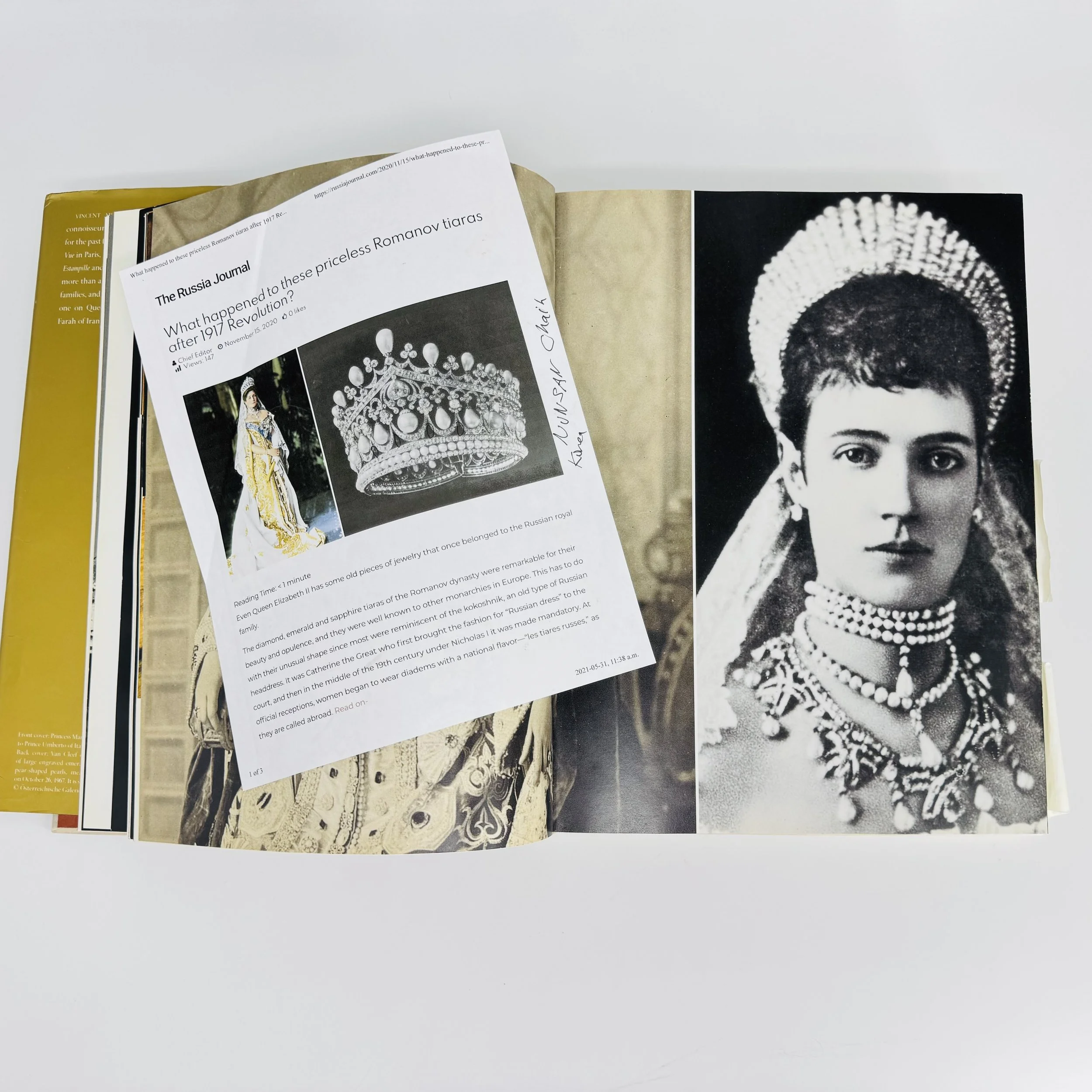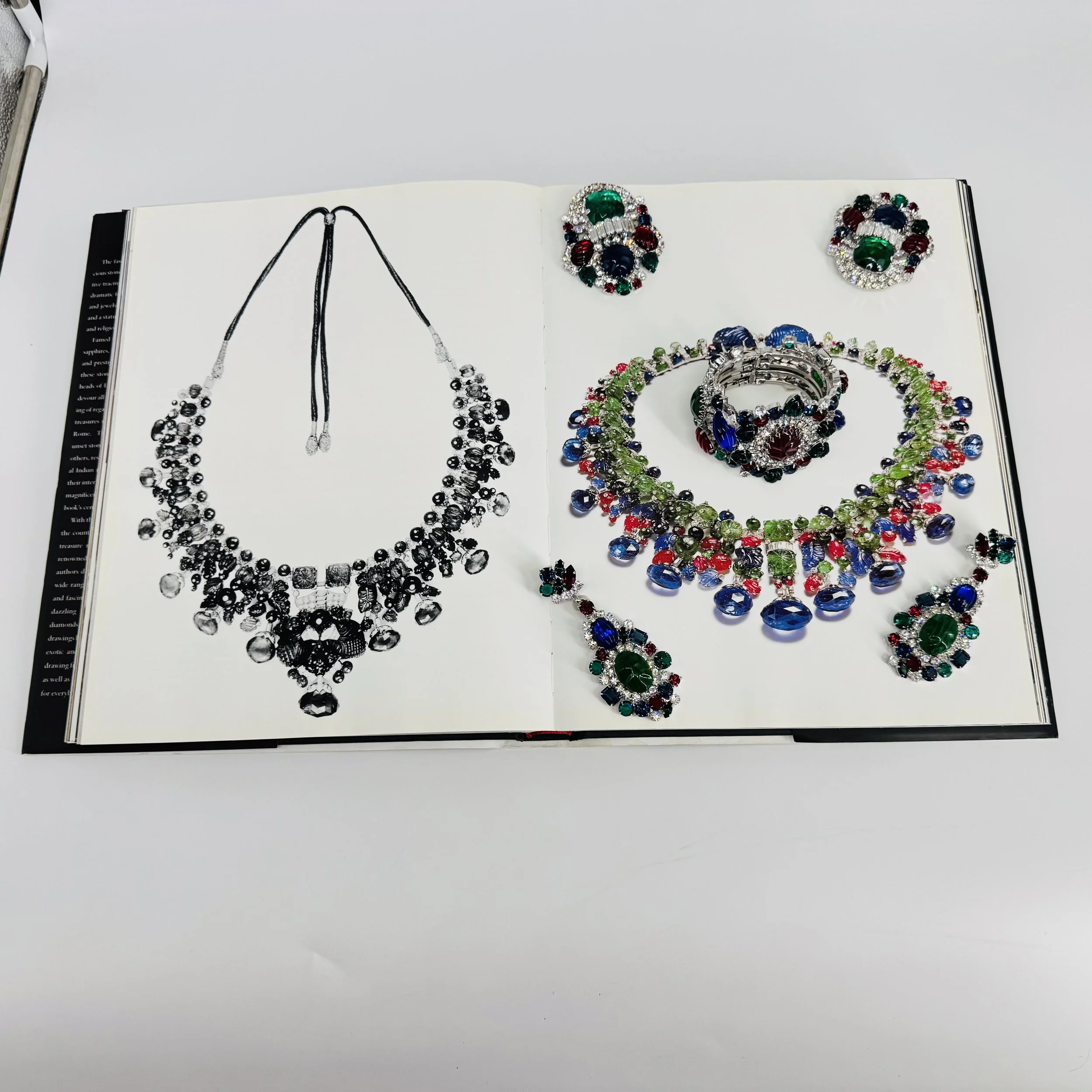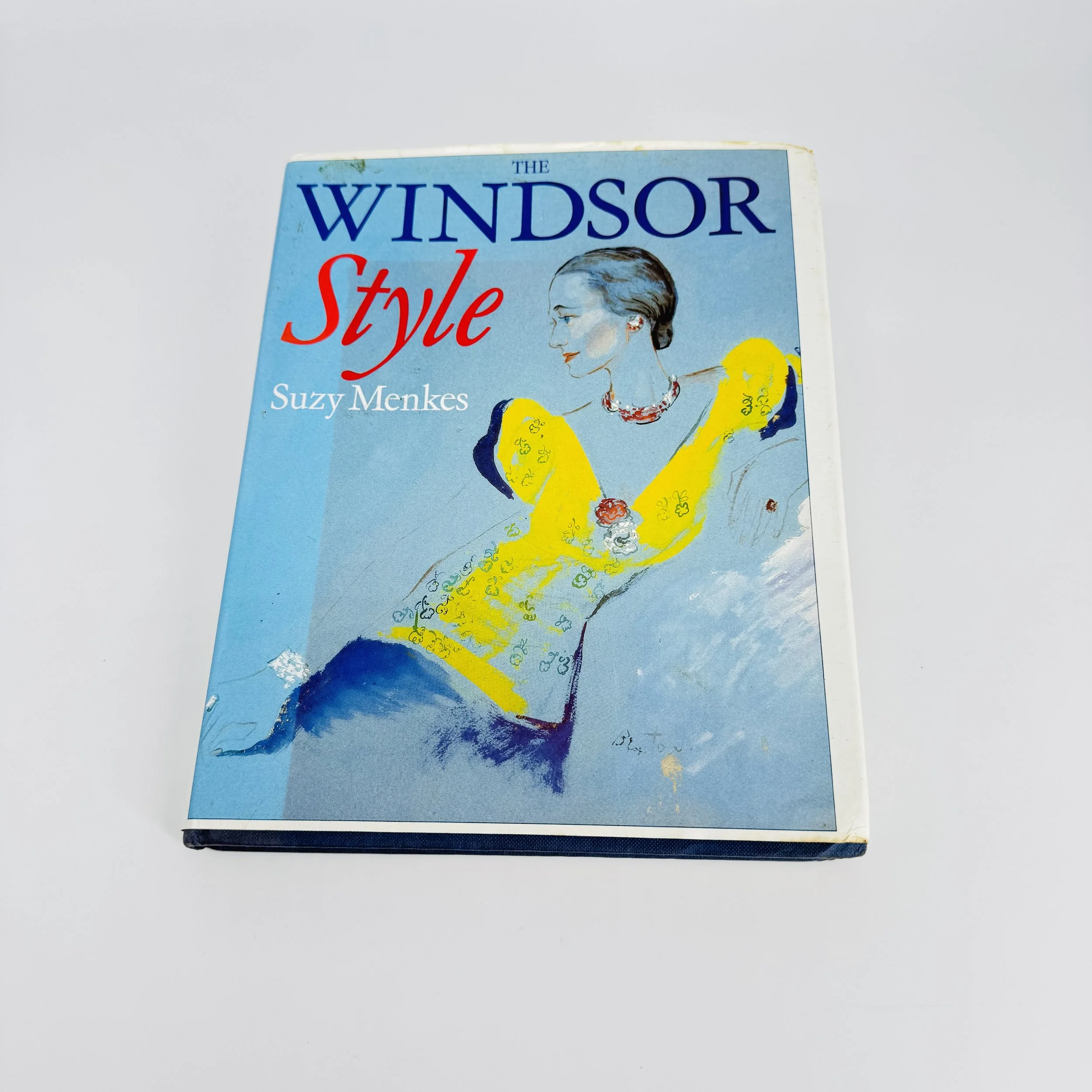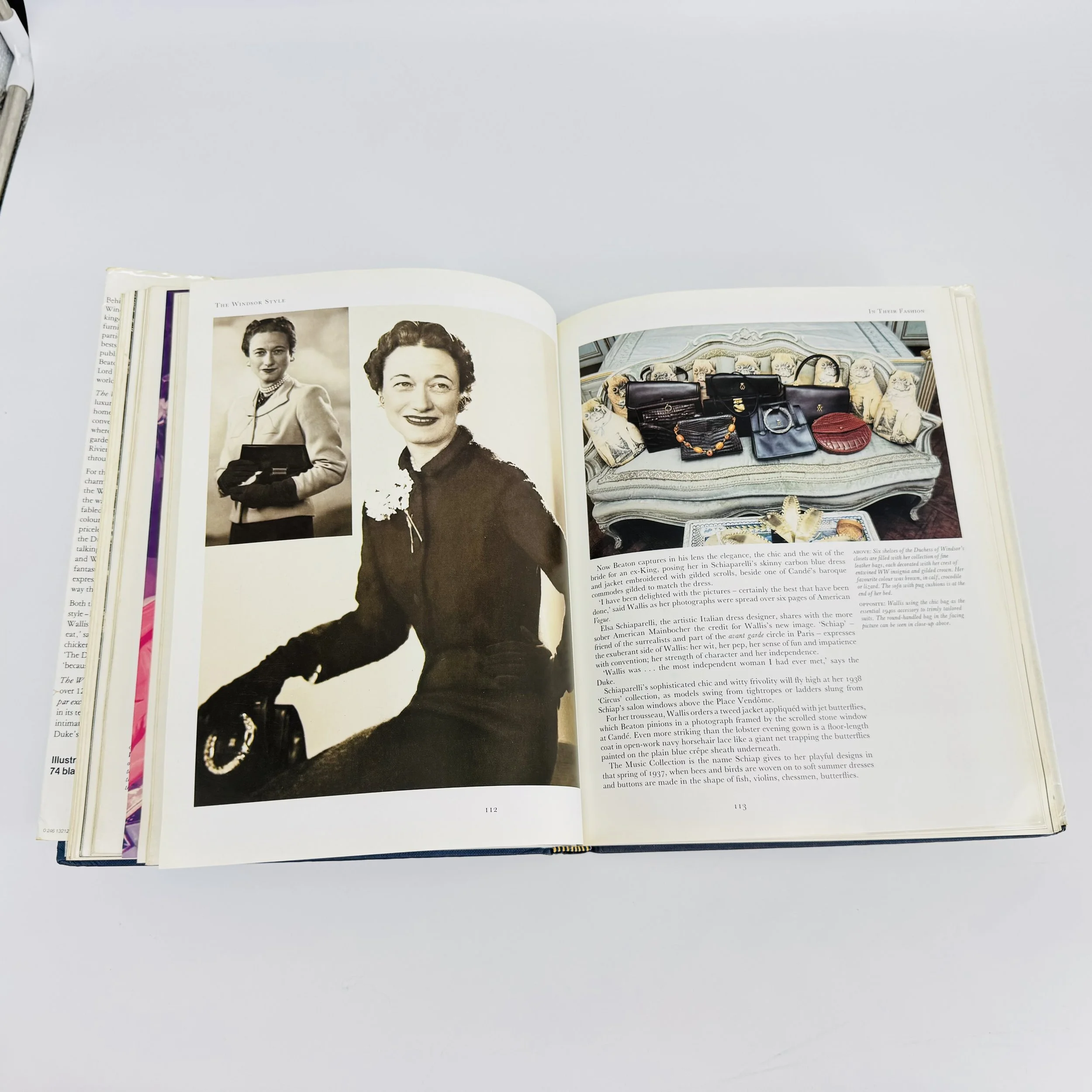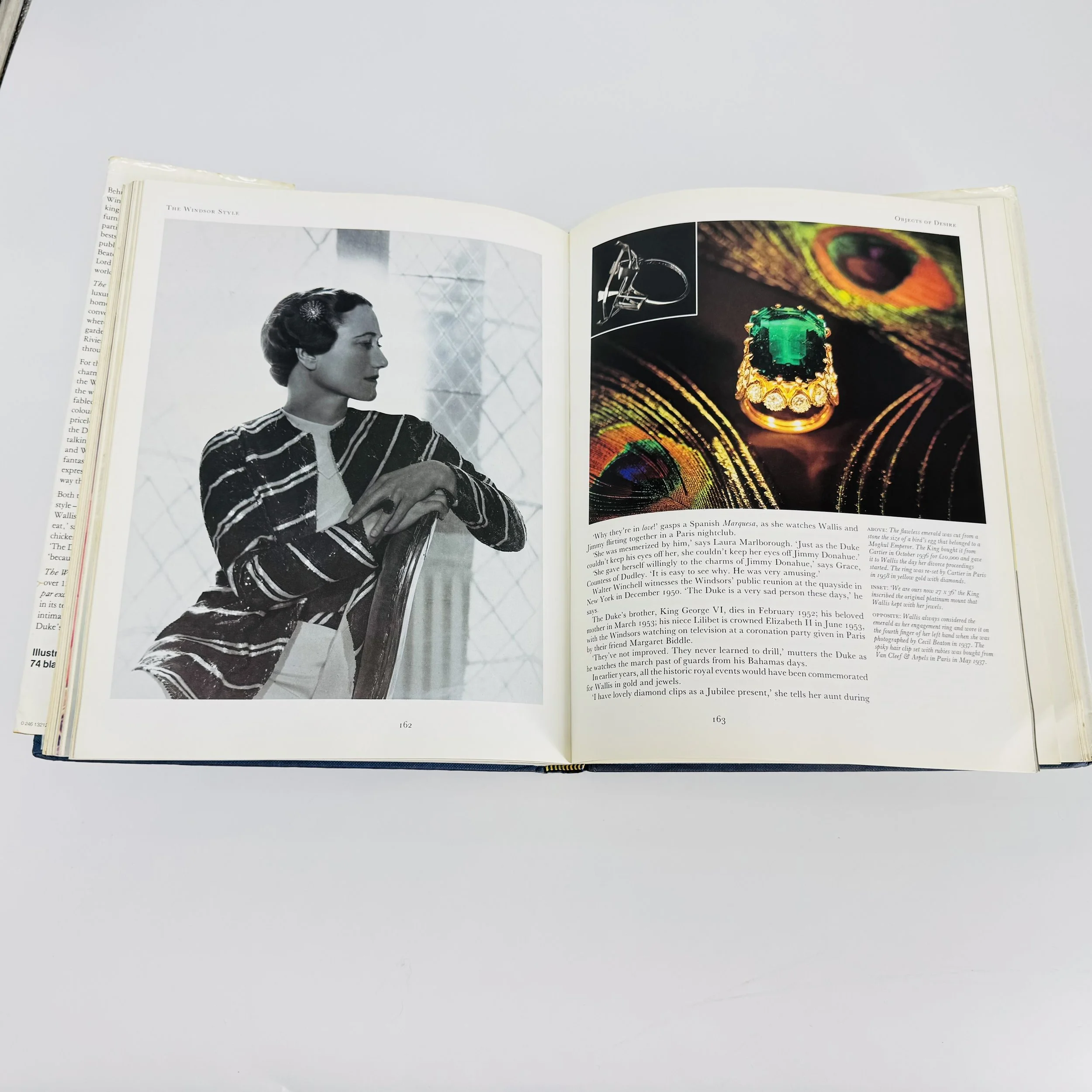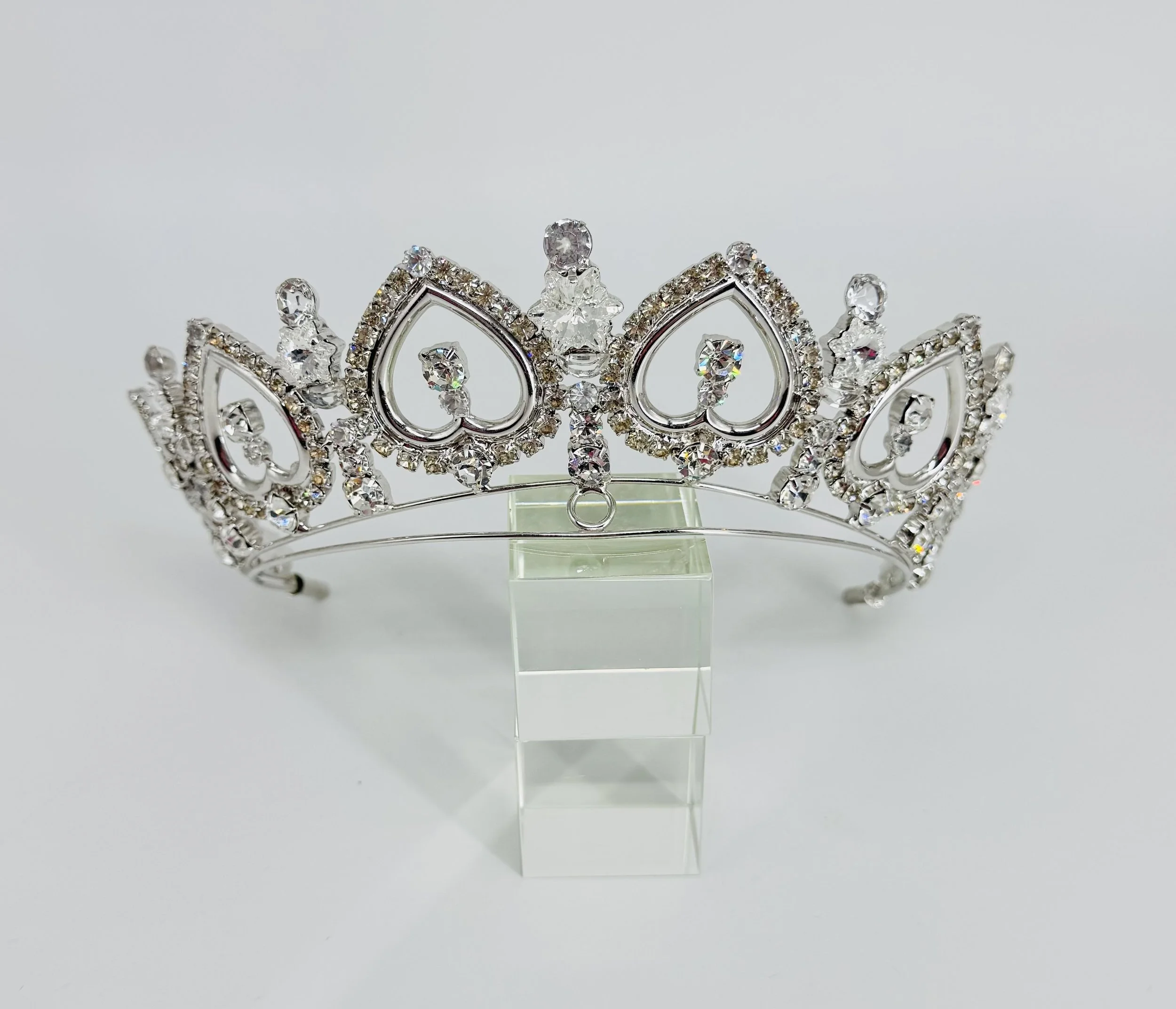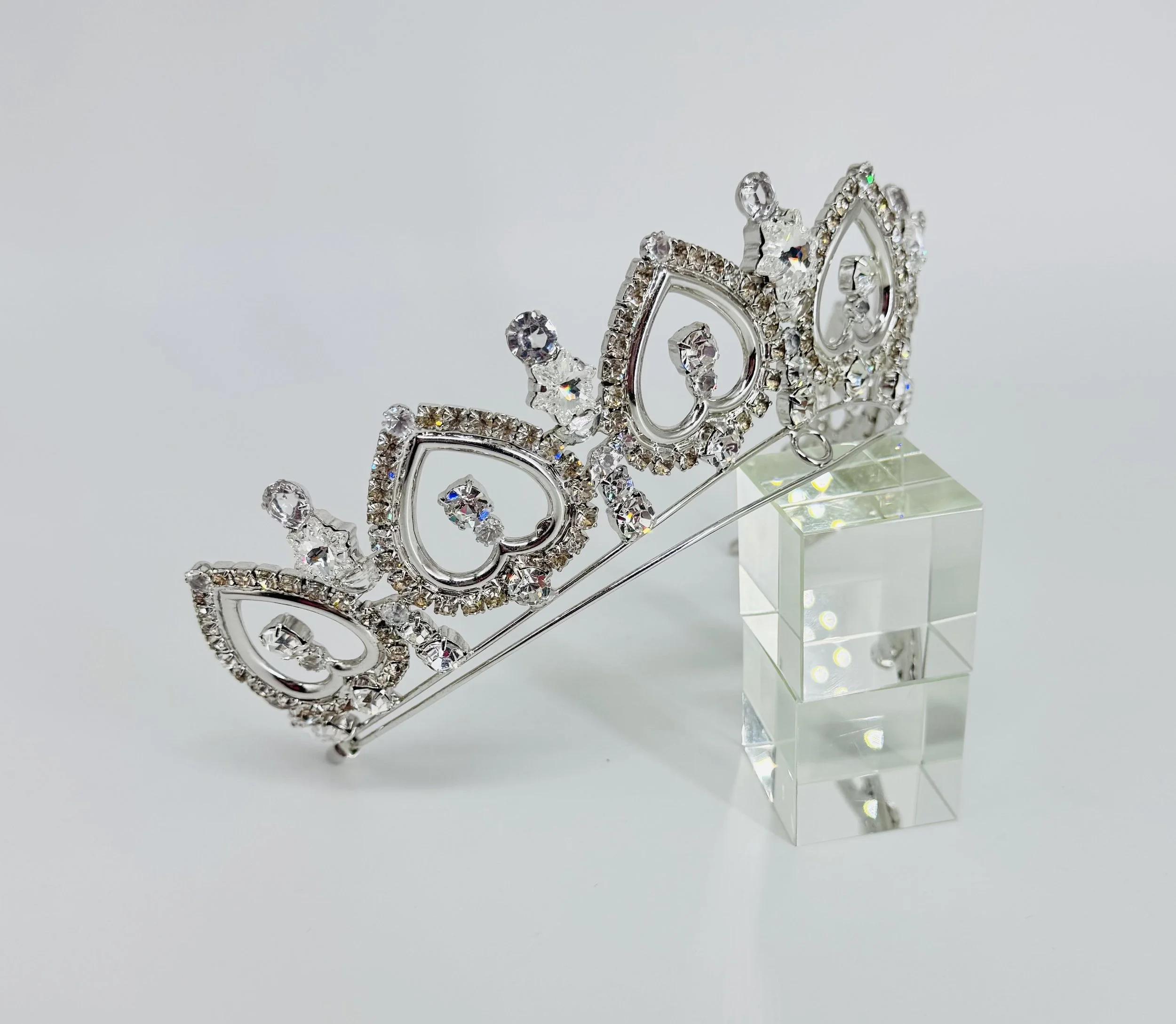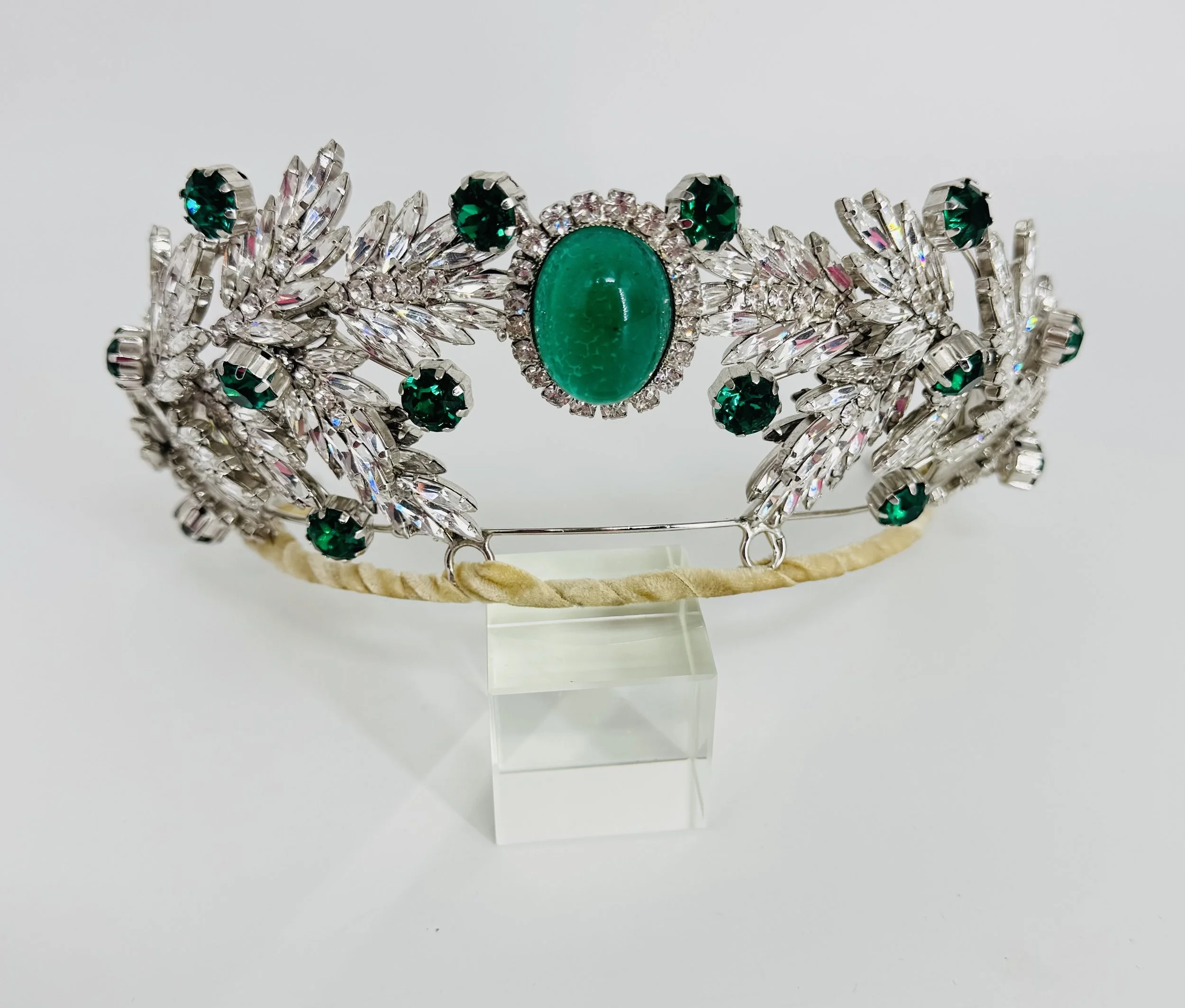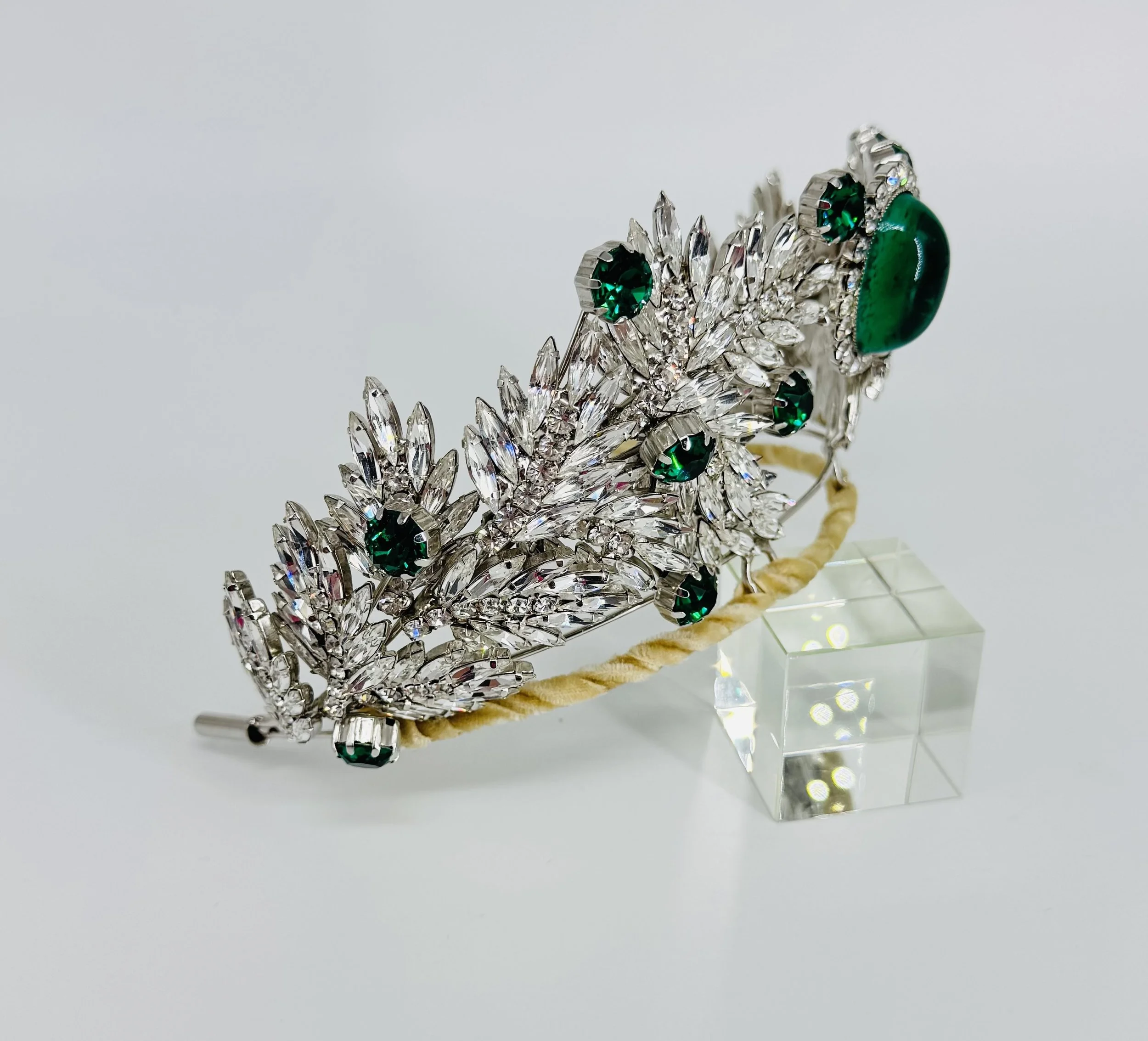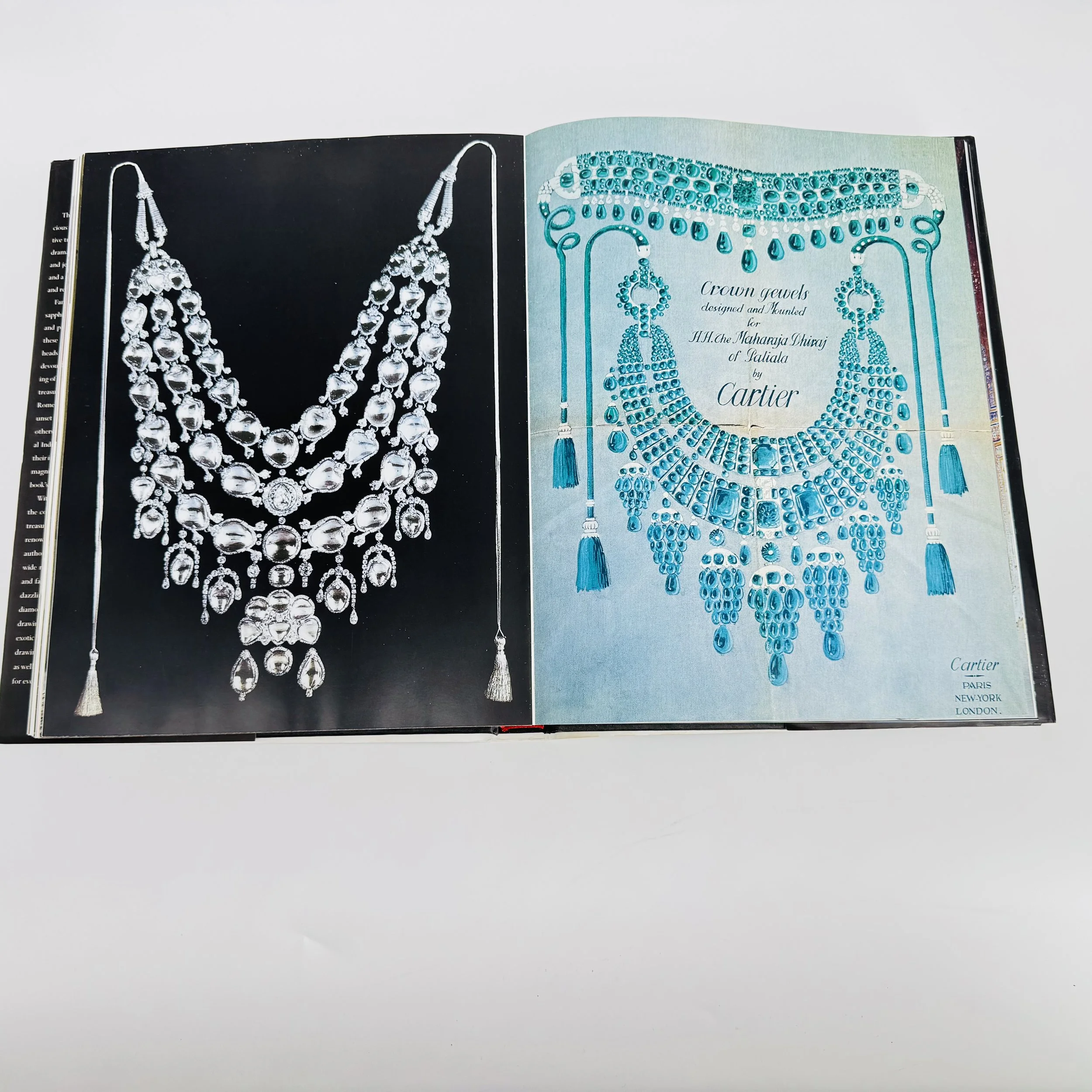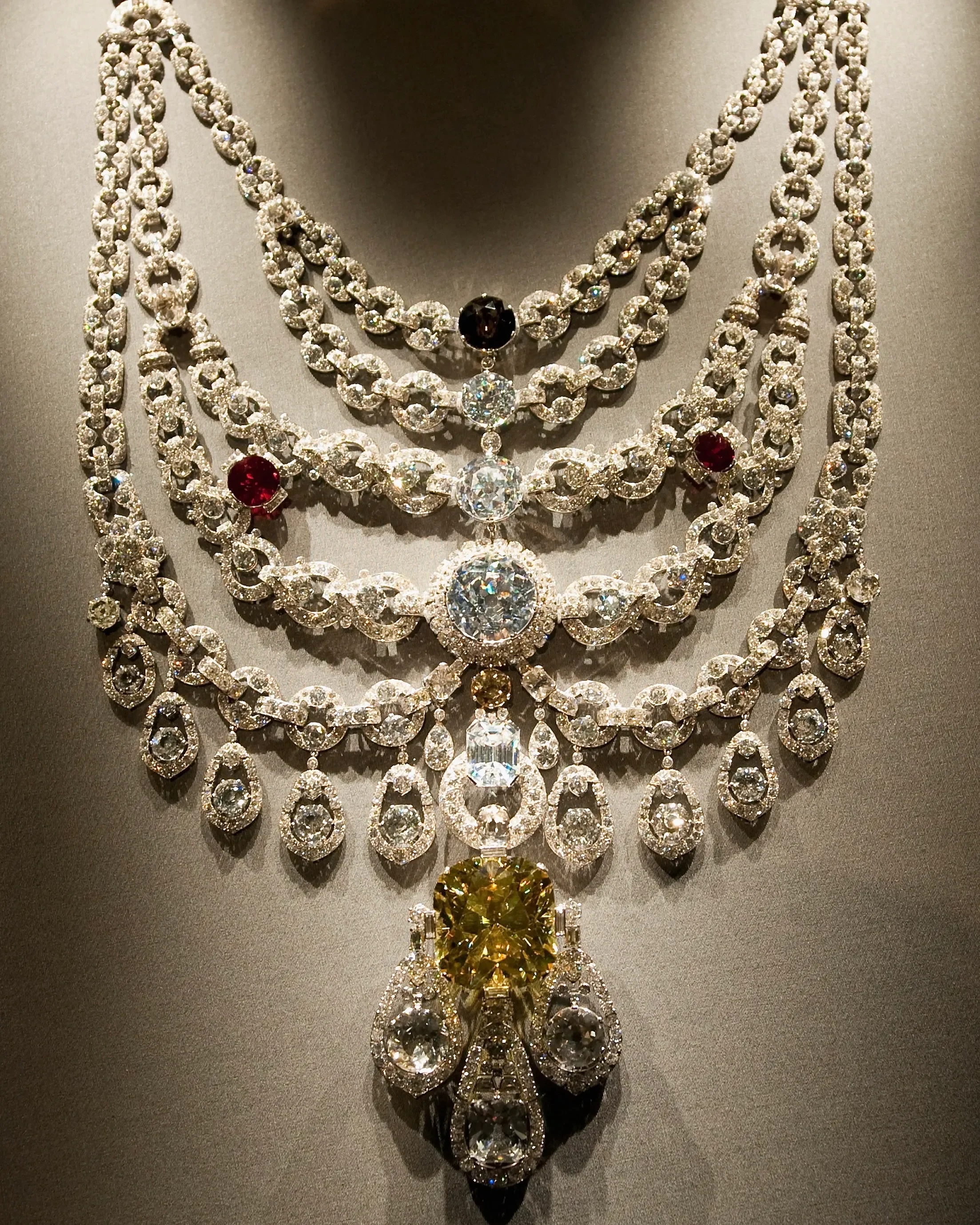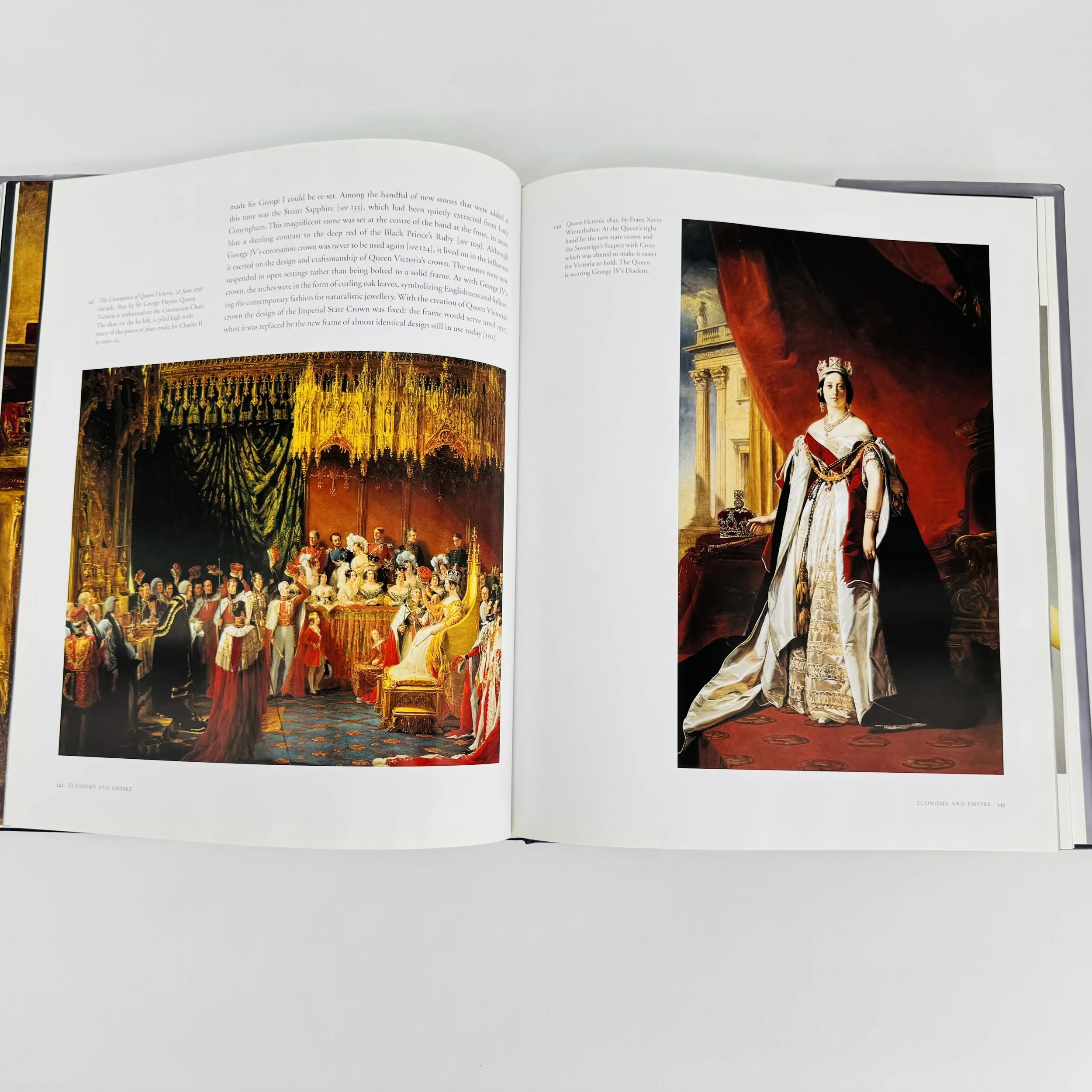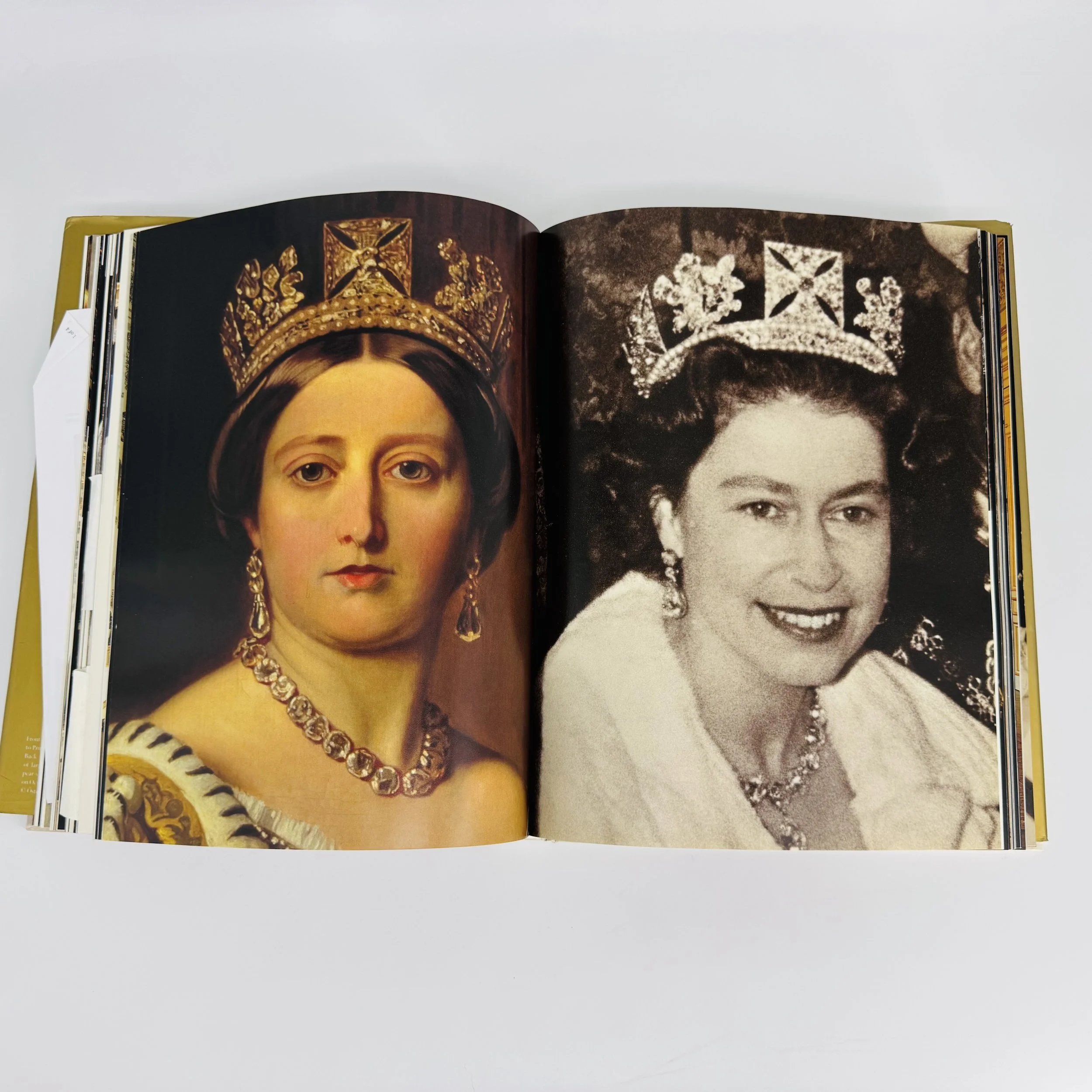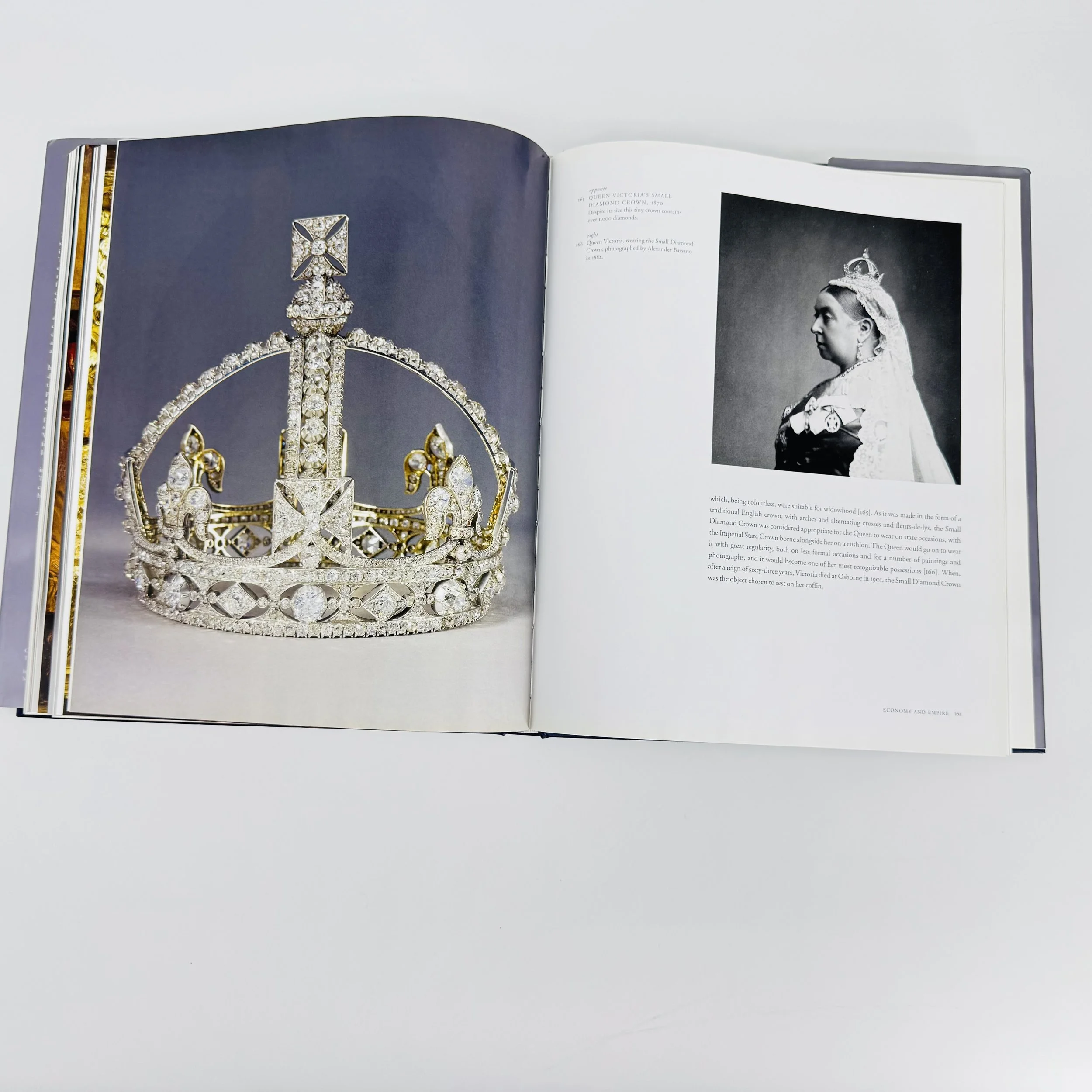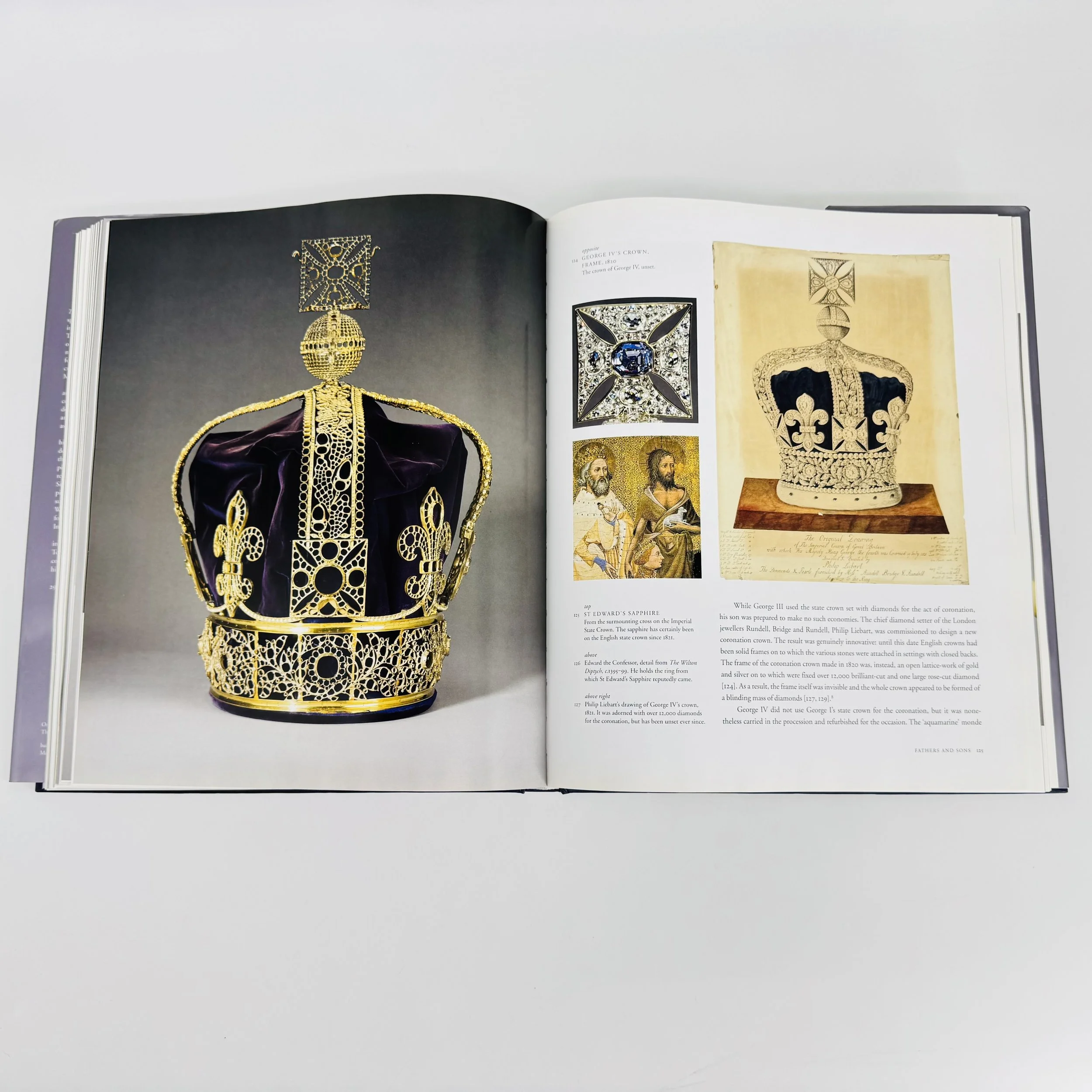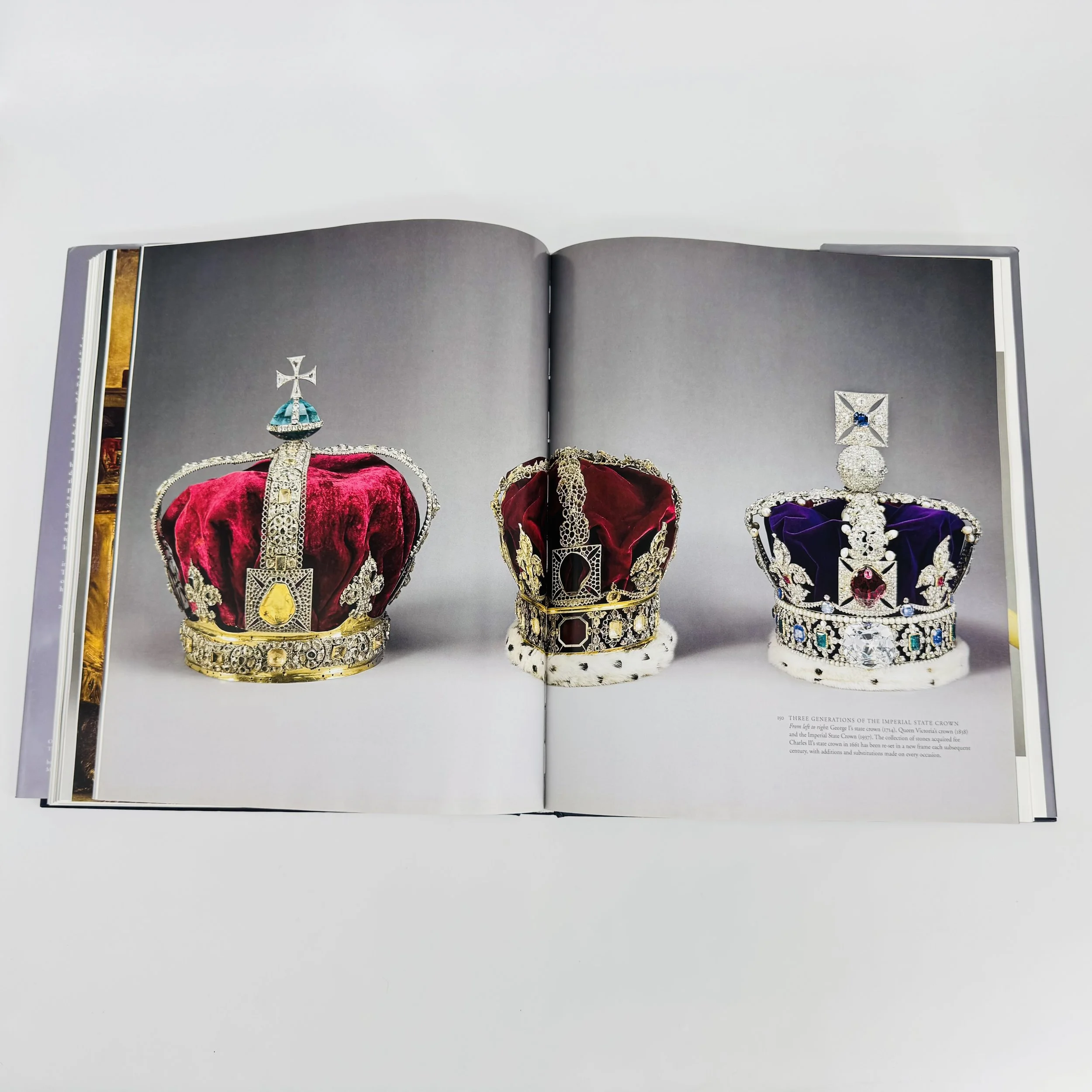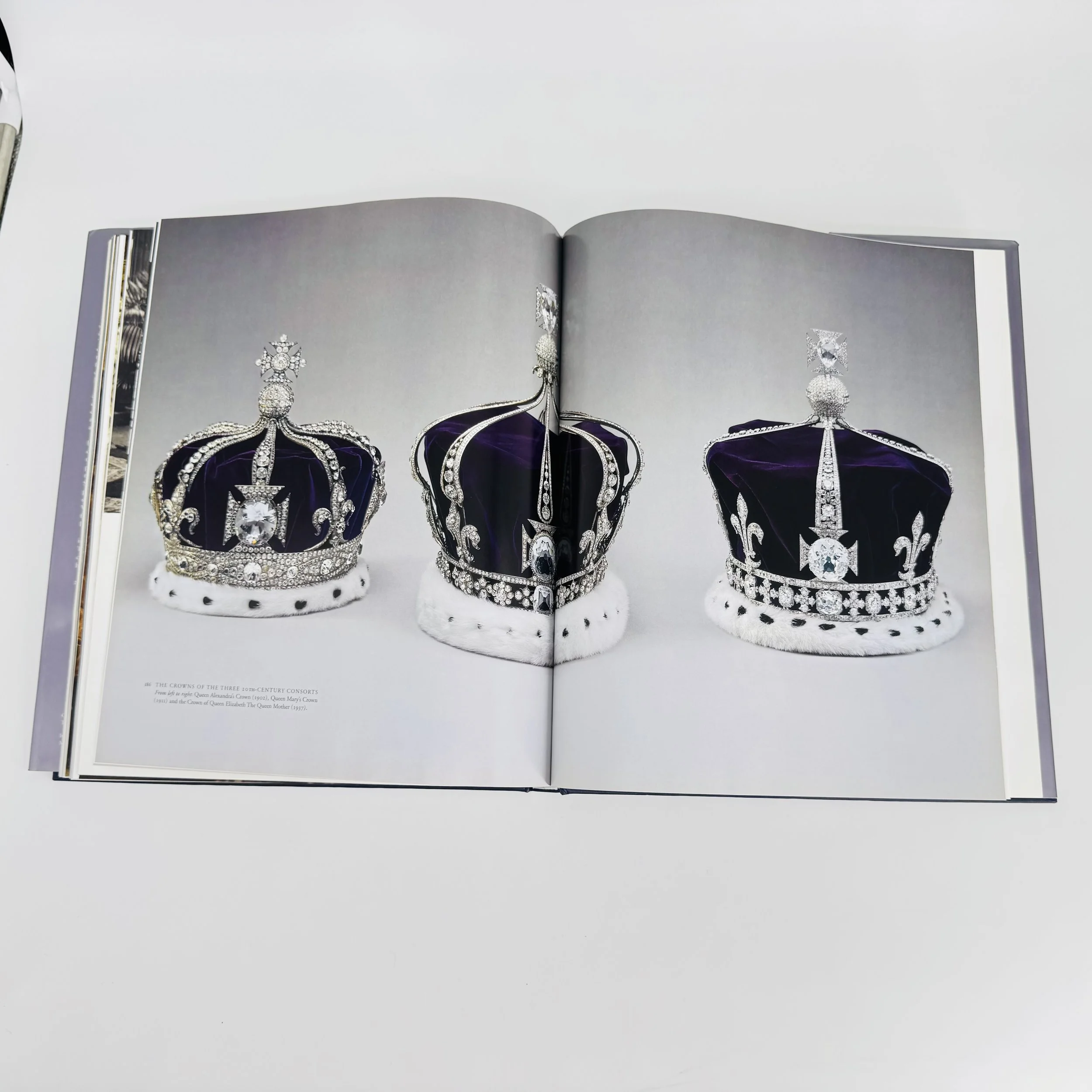Royal Jewelry From Around The World With Alan Anderson
BY MARIANA SANDOVAL-ANGEL
COPYEDITING BY GINGER MARTINI | 11 MIN READ
When you merge a passion for jewelry with a love of history, you’ll find Alan Anderson himself. We had the incredible opportunity to take a peek into his massive and fabulous personal library on Royal Jewelry, which led into an amazing conversation about the historical facts around these jewels and the wearers. Alan takes immense pride in his book collection which he uses every single day as research for new pieces or for entertainment. Alan is truly passionate about his career, which we found very inspiring and it is our hope that this piece brings you a little bit of the effervescent joy he radiates when sharing about his creations.
“My book collection starts from the love of books and the love of fashion books. I have been making jewelry for 27 years and I have been collecting books longer than that. I have rare books on French couturiers, I just love books on anything to do with fashion. Sometimes, when I’m working and I’m blocked I just spend a day here with music on just going through my books and catalogs and then the creativity starts.”
How do you begin your research when working on a project based on royal jewelry?
Depends upon period and who it is, if it’s a character specific like Queen Mary, who was known for her love of jewelry and who really made the British jewelry collection what it is today, doing research for somebody like that it’s easier because there are so many photographs and reference material. So first, I will find all the books that I have on the royal jewelry collection and the chapter specifically on Queen Mary.
I opened the Boston Design Week two weeks ago with a presentation of the royal jewels and I made a tiara specifically for that presentation that the people would play with and pass it around. The tiara is called The Girls of Great Britain and Ireland. This tiara was a wedding gift to Queen Mary. For this, I used the Queen’s Diamonds book as a template because I wanted to get it as close as I could to the original. Using the book literally gave me a template on how to take that tiara and break it down into individual components, then build it and assemble it. That’s why a good reference book is really important, in this one specifically the images in the book are life-size images.
If researching somebody with not so many pictures, but from a certain period, I would base what they would wear on jewelry from that specific period using reference books again. I will always prefer my books before the internet. Occasionally, I will pull up videos on the internet to have even more references. Last year when I was working on flamingo broaches I googled “flamingos” to see how they moved and how they would fly.
Which piece would you estimate you spent the most time researching?
It doesn’t take that long for me to research because I have read so many books and I have a weird mind that I remember everything. It’s very safe to say, if you need something Hollywood or Art Deco, I know that period so well I could find it.
Once, I made a copy of the Cartier Toussaint necklace and I used one of the Cartier books because they wanted it as close to the original as I could. I used the book and thank God I had stones that were similar size and shape. That necklace took more time than a tiara because it had to be so precise.
Do you have a favourite of the royal family styles?
Every Royal Family in the world, going back hundreds of years, has their own look, style and collections of jewelry. The Iranian crown jewels are incredible, but they are so different from the British royal jewels, and they are so different again from what was on the Russian Romanov jewelry collection. The Royal Family that I have more books and references is the British royal house because that’s the one I am most interested in. Also, because in the 20th century, with photography, there is just so much more material on them than for other Royal Families.
Can you pick one characteristic that is always common among each royal house?
Every period has its own style and each family has their own signature styles that belong to a period. Like in clothing there are bustles, crinolines, leg-o-mutton sleeves that belong to one certain period, it’s the same with jewelry. Every Royal Family jewelry collection is so varied, however, in the British house there is so much diamond jewelry. If I’m building something with diamonds, I use crystals. Diamonds are, in fact, the easiest to reproduce because Swarovski crystals look so real.
On the other hand, Iranian, Mogul, Indian and Persian jewelry is all about the stones which are hundreds of years old. One of the things that’s really beautiful is that the cabochons, which are smooth domed unfastened emeralds, will sometimes have carvings from the Coran. I think they are chic, sophisticated, not glittery but highlight the jewelry in a unique way.
Have you replicated any jewels for the Iranian or Russian royal families?
Yes, I made a very close copy of the large State Crown of Iran. But where the original was emeralds, sapphires and rubies mine was all done in crystals and pearls. I completely based it off the Iranian Crown Jewels books. I could see how the motifs came out, the arches, it was fun.
I’ve done Russian Caucasian tiaras before and I did a copy of Maria Feodorovna’s diamond swag and pearl necklace and a pair of diamond bow brooches with pearls swags to be worn on the shoulders of the dress with the necklace. For this I used the Russian Jewels book.
Also, inspired by a necklace that Cartier made for the Maharajah, The Tutti Frutti, I made my own version of it. The Tutti Frutti jewelry. The Maharajah Jewelry book was my reference to create this piece.
From left to right: Alan Anderson’s books: “Crown Jewels of Iran” by Meen and Tushignam, “Queens’ Jewels” by Vincent Meylan, and “Maharajas’ Jewels” by Prior and Adamson.
Inspired by the book, Alan created complementary pieces, seen here in the corners and middle of the page on the right.
Do you carry any books that are limited edition?
Windsor Style by Susie Menkes is really rare, it was one printing. Some of the jewelry books that I have only did one or two printings, that happens with most of the artbooks. There are books that I’ve been looking for years. There is one called Jewels of Fantasy; I’ve never been able to get a copy of that.
Years ago I got some Sotheby’s and Christie’s Auction Catalogs with every major jewelry sale that happened in the world and these are amazing references. There is stuff that has never been seen.
Alan Anderson’s book: “The Windsor Style” by Suzy Menkes.
Can you tell us a little bit about your creative process?
Specifically speaking about Queen Mary’s tiara, first I find the images, then I would dig through all the vintage stone drawers to see what I have that has a similar cut and colors to some of the diamonds in the tiara. I would have the book open on the table and lay stuff out on the book, to see sizes and shapes of diamonds.
Then, I will build the underwire support, the carriage that sits on your head like a headband. Next, I build the very central point of the tiara and I attach that into place with the soldering gun. That central part always looks so bizarre, with these wires in one piece of a tiara but you know it’s going to grade down in size. Then I would start building each piece and fitting it in like a jigsaw puzzle.
Alan Anderson’s working desk at his Atelier.
Referencing the tiara from Napoleonic era, I built one for Michael Zoff, evening wear designer. In February of 2019 Michael and I opened Fashion Week. We designed the collection together; he would bring over the fabric samples and I would pull up stones for the jewelry. That emerald Napoleonic tiara was the finale, on the bride. She was wearing an off-white bridal gown completely covered with emeralds. It was all based on Russian and Napoleonic jewelry. It was a big lacy necklace, with a dog collar, and a long cross on a chain, it was really gorgeous.
ZOFF + Alan Anderson’s showcase at The Hazelton Hotel, 2019. Photograph by George Pimentel.
Alan Anderson’s Napoleonic Tiara for the collection.
Do some of the larger, more extravagant pieces ever get split apart as they pass through different generations?
The famous Maharaja Patiala necklace was made by Cartier for the Maharajah of Patiala. It was a massive diamond necklace made in the 1930’s, and sold off through the years. Not so long ago, Cartier found it, piece by piece, in auctions because it had been cut down into other pieces of jewelry. They bought as many pieces as they could. What they couldn’t find, like some of the massive yellow diamonds, they used cubic cuts and reassembled it. Currently, it’s with Cartier in their archives. All of these massive jewelry houses are now buying back their masterpieces and putting them in their archives because it’s the history of their company.
In India, men were the primary wearers of jewelry. In Indian culture, with the Maharajas, it was about your wealth and your position. They will have a jewel sarpech on the turban and wear huge necklaces. Women wore less jewelry than men. Men were sort of peacocks.
Cartier image with the Maharajah necklace.
Alan Anderson’s book: “Maharajahs’ Jewels” by Prior and Adamson.
The original Maharajah of Patiala necklace by Cartier.
Apart from royal jewelry, what are the other big collections of books you have?
Books on Art Deco, 1920-1930 Cartiers, Fedura, Van Cleef and Arpels, all that period is the golden age of real jewelry. When women wore beautiful real jewelry all the time. There is so much reference and there are so many books.
Alan Anderson’s book collection at his Atelier.
Based on your years of experience and research, what would you say is what makes these jewels so valuable that they become a family heirloom?
Real stones take millions of years to make and some of these Mogul stones have been around for hundreds of years, so there is a historical provenance to them. With all the modern technology right now, we can cut diamonds in labs, but before it was all done by hand, it was all natural stuff that was found. That’s what makes it so amazing. Why people hold on to it and why it’s worth so much. It’s the history behind it, behind the piece of diamond jewelry, those diamonds could be thousands of years old. They are from mines that no longer produce. There are regions of types of stones in the world that have been mined out, you can’t even get it anymore. Part of the history, which is not so pretty, is how many battles have been fought over it, travelling from country to country for wars and bloodshed.
It was believed that some of these precious jewels were even gifts from Gods. For instance, the Koh-i-Noor (Persian for Mountain of Light) is a 105-carat diamond. It came from India in the 1850’s as a gift to Queen Victoria when they made Queen Victoria Empress of India. Now, India disputes this, Pakistan says it’s theirs, Afghanistan says it originally belonged to them. All these countries claim ownership. Currently it sits in the Tower of London in a piece of jewelry.
Alan Anderson’s book: “The Crown Jewels” by Anna Keay.
Alan Anderson’s book: “Queens’ Jewels” by Vincent Meylan.
For the Coronation of King Charles and Queen Camilla two years ago, normally this diamond would have been in the consort’s crown, but Queen Camilla did not wear it because it’s so controversial. She took Queen Mary’s Crown and removed 4 of the 8 arches out, and the diamond due to its controversy. It’s now in the Queen Mother’s crown. All these crowns are meant to be convertible. However, one of these days, I have a feeling that diamond has to go somewhere because there is such a controversy, and that’s what I love about this. It’s the history of the world through stones, it’s so interesting.
Alan Anderson’s book: “The Crown Jewels” by Anna Keay.
These pieces must be difficult to travel with. What can you tell us about it?
Usually, the Crown Jewels cannot be used outside of their state, they can’t leave England. When Queen Mary and King George V went to India for the Delhi Durbar in 1912, they had to have new crowns and tiaras made because they couldn’t take State Regalia from England.
In Britain, a lot of the crown jewels were destroyed and melted down when they beheaded Charles I, and they were a Republic. They had to rebuild so much. The jewels are now used in other pieces of State Regalia, they get used over and over again, because the crowns don’t fit certain people. However, they still use St Edward’s Crown and the Imperial State Crown. The latter was actually made for Queen Victoria’s Coronation. There is also her little diamond crown that she wore when she got older as a widow, and then Queen Alexandra wore it after. It’s a little tiny diamond crown worn on her widow cap with all the laces on her head, she spent the rest of her life in mourning after Prince Albert died.
Alan Anderson’s book: “The Crown Jewels” by Anna Keay.




